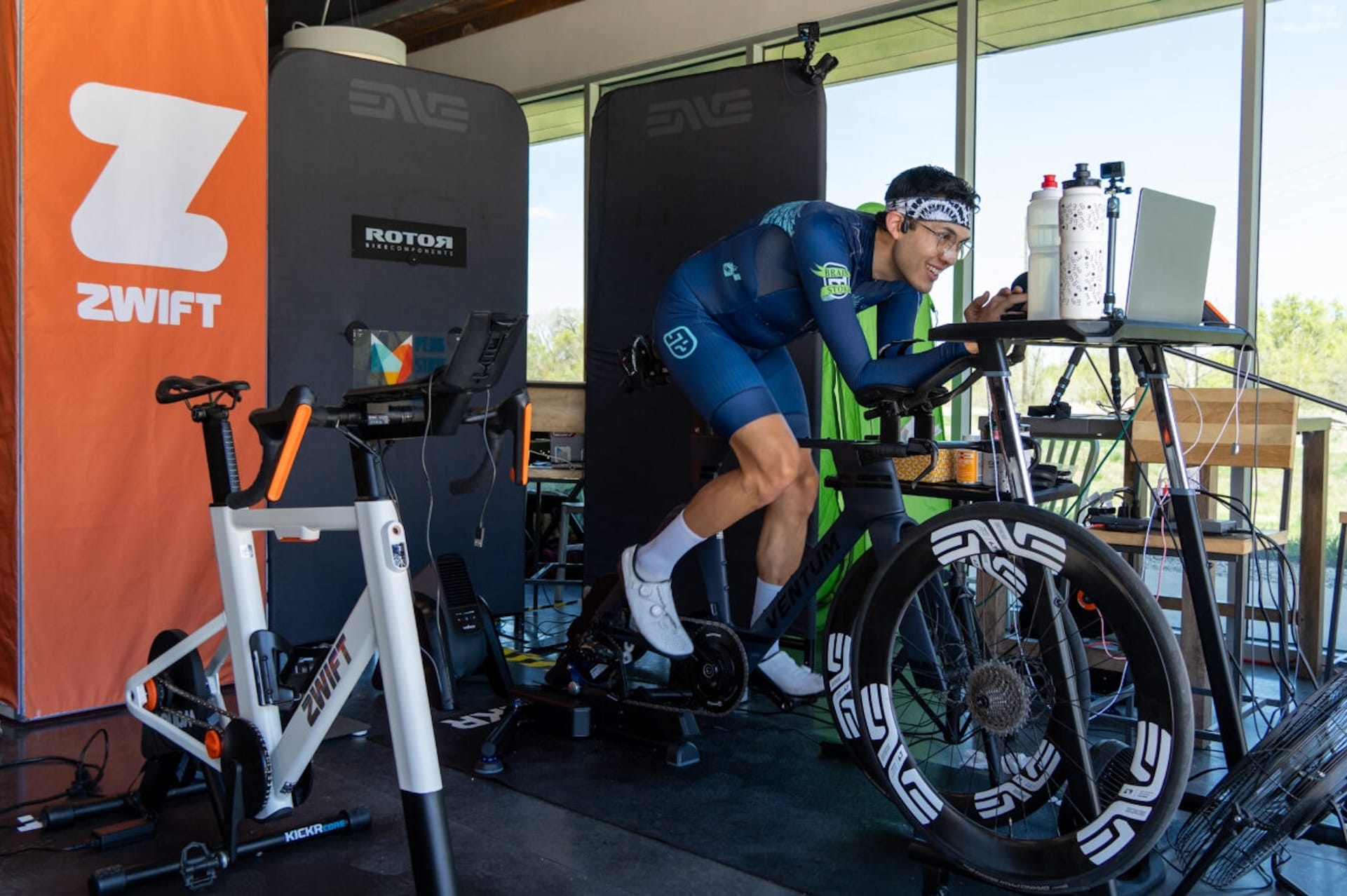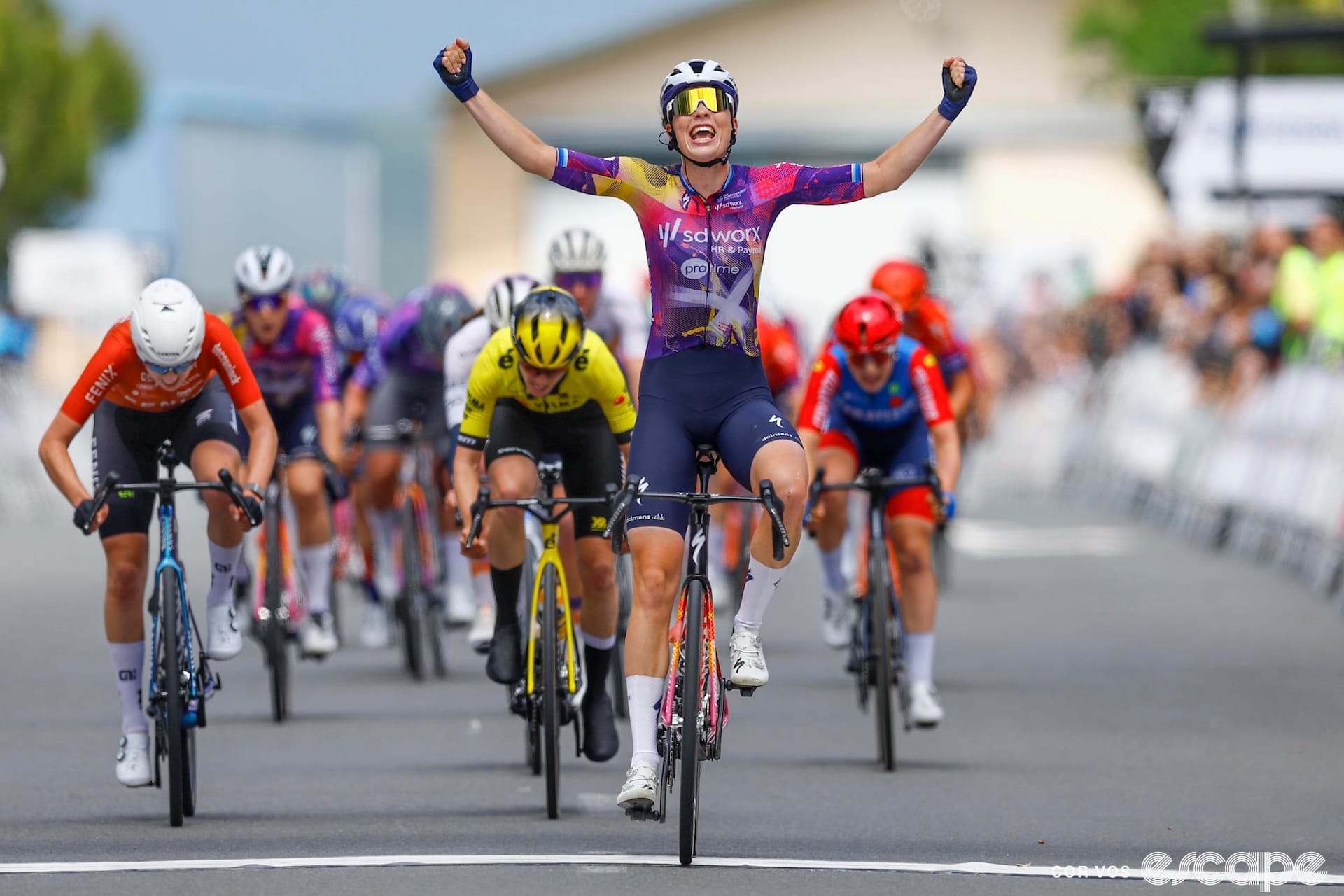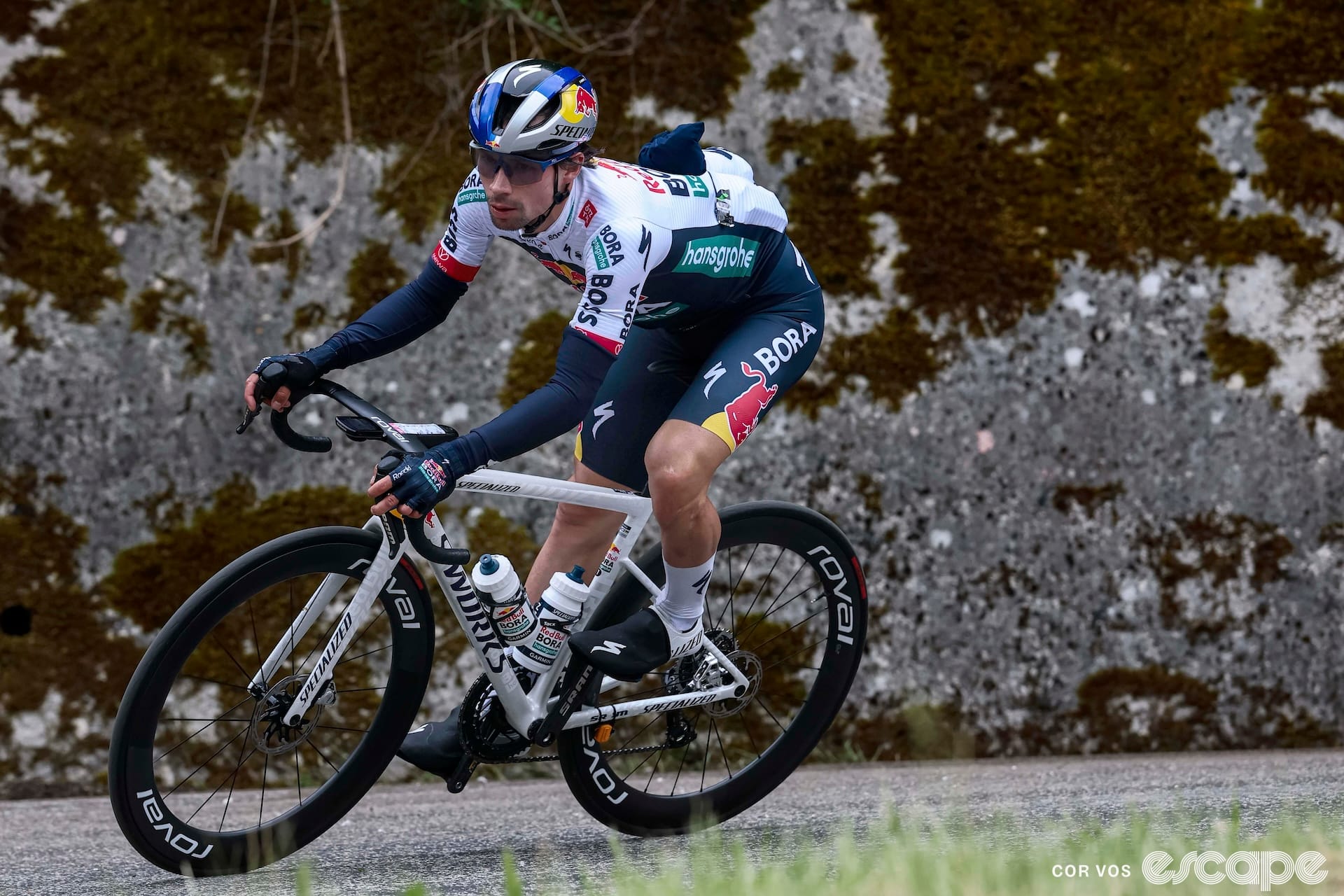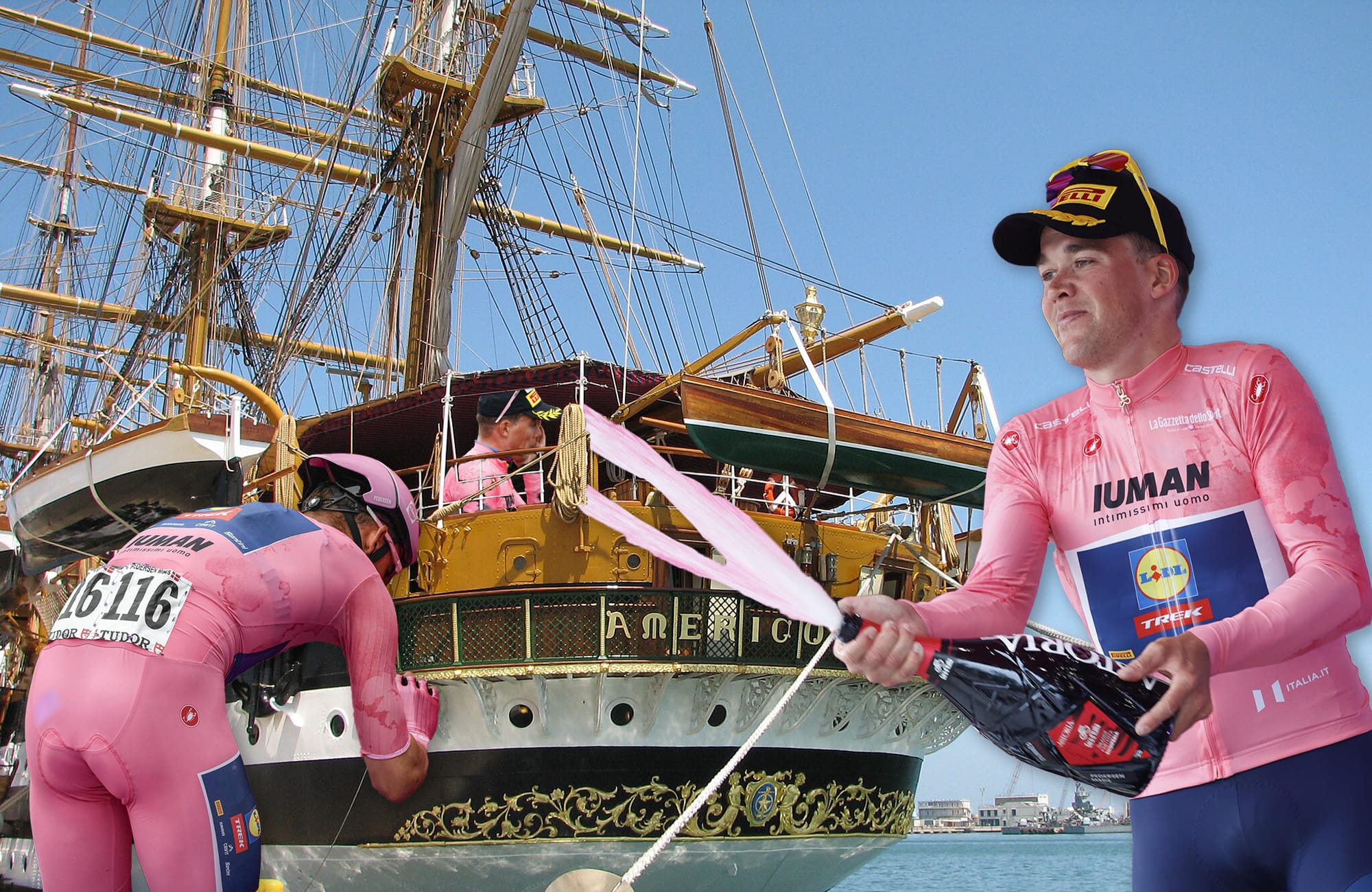Giant has today announced the 10th generation of its venerable TCR range of all-rounder road racing bikes. On the surface, it’s not a huge leap forward from the one it replaces, and the improvements are about what you’d expect: better aerodynamics, less weight, more stiffness. It’s a familiar story in the road bike industry if there ever was one. But considering the outgoing TCR was already a top contender in the category, the fact Giant was able to make significant improvements on it at all is still noteworthy – and out on the road, it sure as hell doesn’t disappoint in the slightest.
The new TCR by the numbers
Road racing bikes are an interesting category these days what with an ever-increasing amount of convergence between lightweight models and aerodynamic ones, and ever more evidence supporting the notion that when it comes to going fast, it’s more important that a bike efficiently cut through the air than post a low number on the scale or an impressive figure on a static stiffness test.
So where does that leave something like the TCR, particularly when Giant’s full-blown aero racer, the Propel, is so good?
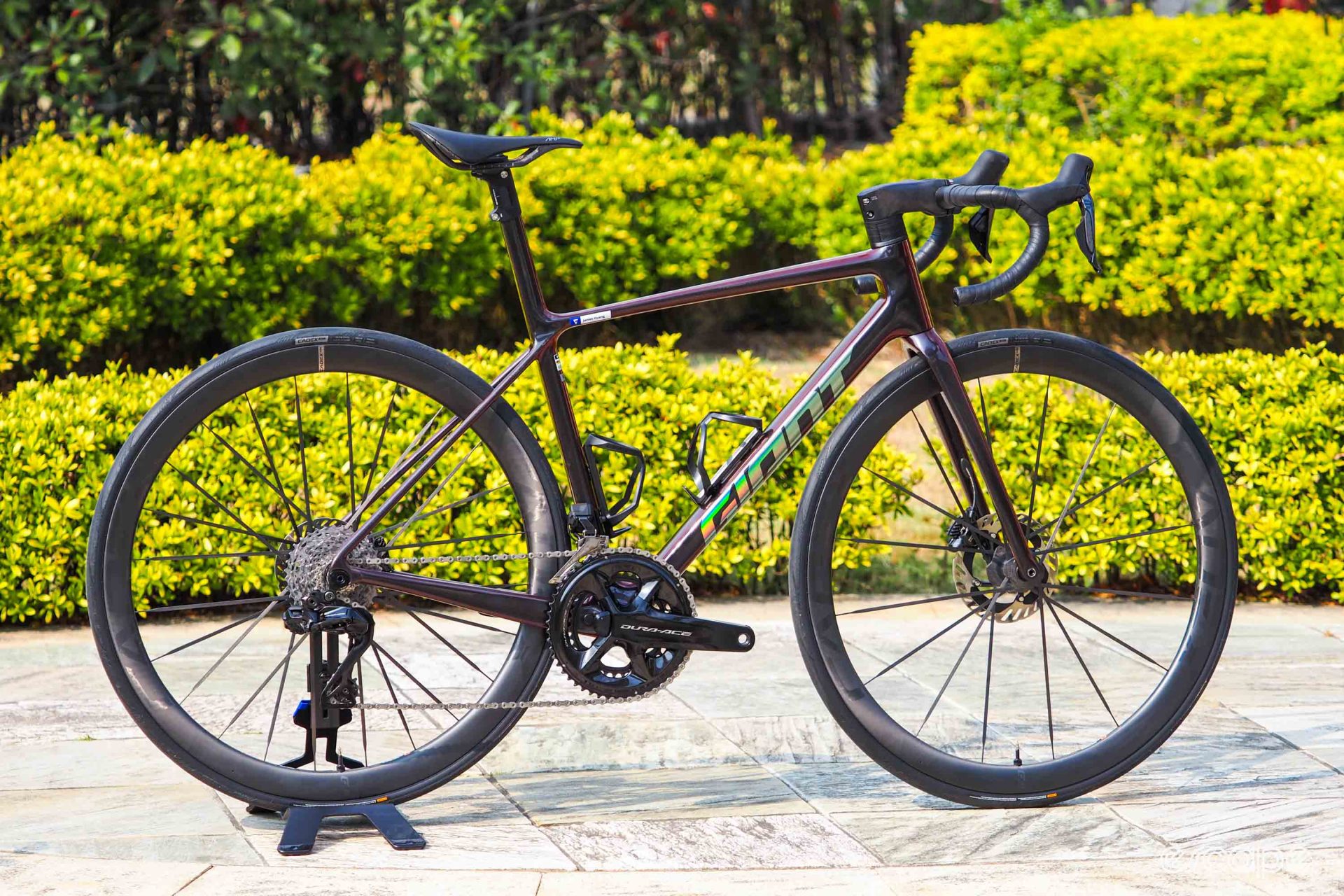
According to Giant racing technology development senior manager Andy Wollny – who’s worked with Giant’s sponsored teams and riders since 1996 – it boils down to the more demanding requirements of folks who actually race for a living. The Propel may be excellent in terms of traditional performance metrics like stiffness and weight while also being superbly aero, but the TCR is still more responsive when a rider really steps on the gas, particularly when heading uphill. Not surprisingly, the TCR is also more comfortable. Wollny said he’s already gotten confirmation from various Jayco-AlUla team riders that they plan to use the new TCR all season – some even reverting back from the Propel, particularly the climbers and classics specialists.
“The frame is a little bit lighter; it’s not much, but it still matters for the pros,” Wollny said. “Propel is better for speed, but to get up to the speed, the TCR is nicer. We did a lot of efforts on the current Propel to make it a lot more compliant than the previous generation, but you can get more compliance out of the TCR.”
In other words, although aerodynamics remains the most important metric in terms of how efficiently a bike moves through the air, when it comes to choosing which bike to use in competition, for some riders it basically still boils down to how the thing feels when you give it the beans. As one person at Giant put it to me, what pro riders ultimately want can be boiled down as simply as, “I go; it goes.”
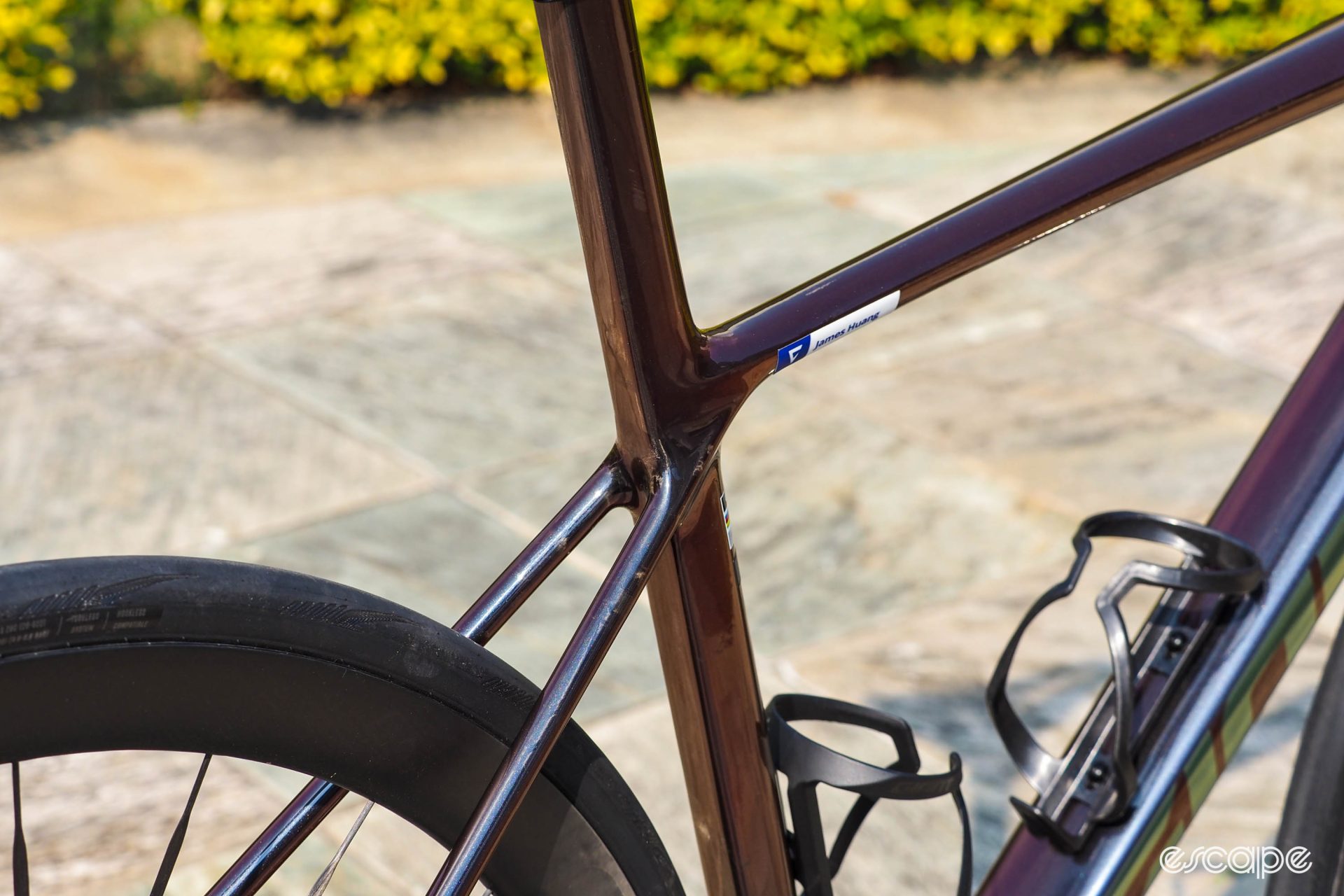
Numerically speaking, the improvements to the new TCR aren’t likely to blow most people’s socks off, but they’re significant nonetheless. Absolute full-frame stiffness sees only the slightest bump of 1 N/mm (150.6 N/mm vs. 149.8 N/mm) according to Giant’s reported in-house figures. However, that number becomes more impressive when you consider the TCR is a fair bit lighter, too. Claimed weight for an unpainted medium TCR Advanced SL frame is now down to 690 g – a decrease of 75 g from the previous version, or more than 10% – plus another 66 g for paint. For a medium flagship model, Giant is claiming 6.4 kg all in.
That’s not quite in Specialized S-Works Aethos territory, but pretty good considering the TCR doesn’t completely trade aerodynamic efficiency for weight like the Aethos does.
Indeed, Giant says the new TCR is better than the old one in the wind tunnel, to the tune of 5.6 W more efficient at 40 km/h for a complete bike fully outfitted with two bottles and cages, spinning wheels, and a motorized rider mannequin when moving at the rather race-realistic speed of 40 km/h.
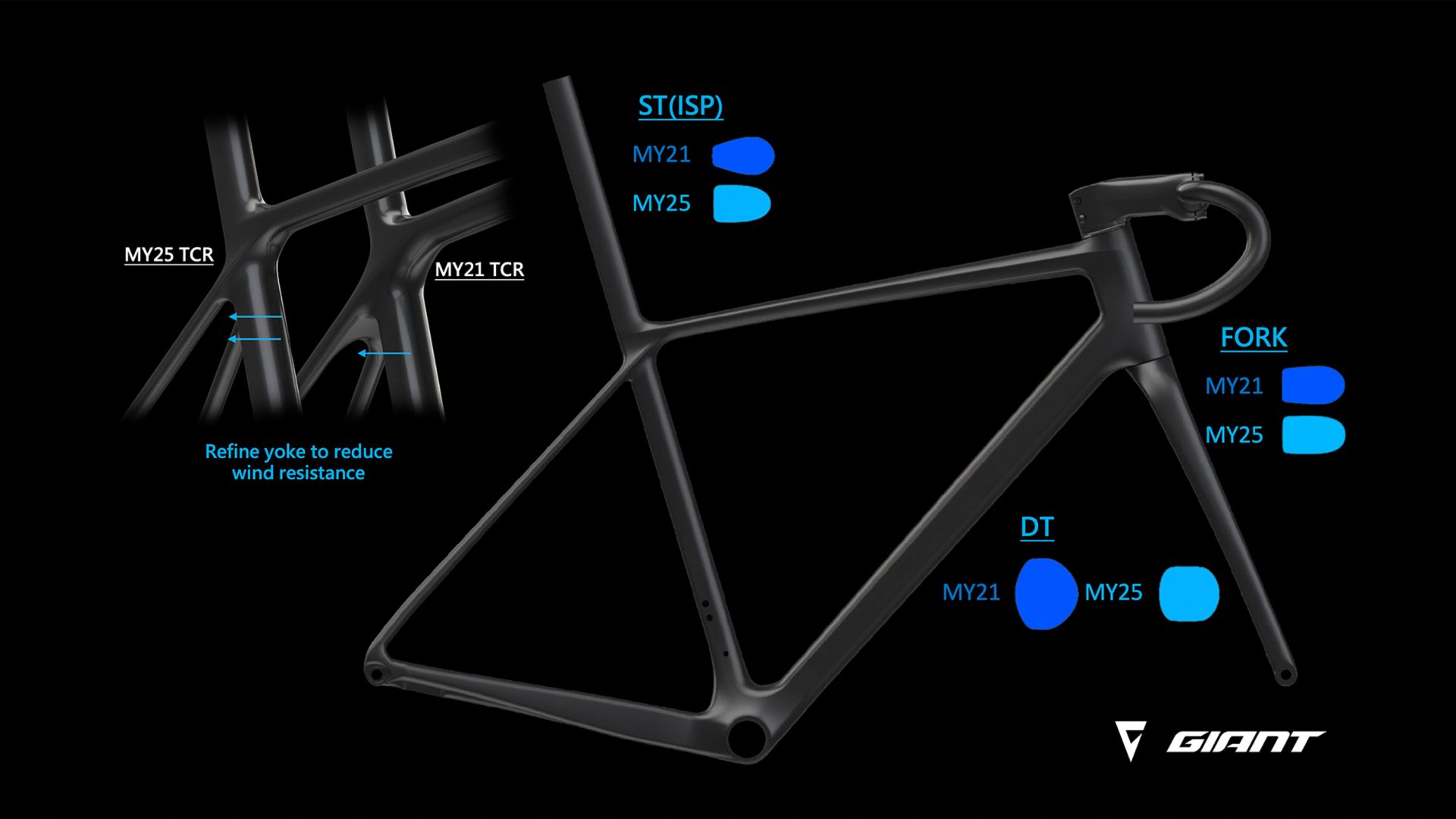
So yeah, all the cliches: lighter, stiffer, more aerodynamic. But hey, improvements are improvements nonetheless, and if you consider the sum total of those attributes to be what makes a TCR a TCR, then the new TCR is apparently the TCR-iest of the bunch.
To Aethos or not to Aethos
Speaking of Aethos, more than a few folks – myself included – have wondered over the last couple of years if Giant might reposition the TCR as an ultralight option to go head-to-head with it. After all, Aethos has proven to be an incredibly popular line for Specialized, and given how well-rounded the current-generation Propel is, it seemed like it’d be easy to make the argument to create more differentiation to the TCR.
During a monthly product development meeting, Wollny was asked for his thoughts on what the then-next-generation TCR should be, and while Giant absolutely considered going the Aethos route, the decision was anything but clear-cut.
“I presented two different scenarios,” he said. “Scenario A was lightweight, lightweight, lightweight; we don’t care about aero. Or we go in the Propel direction, but make it a little bit lighter and less aero, but more aero than the current [TCR].”
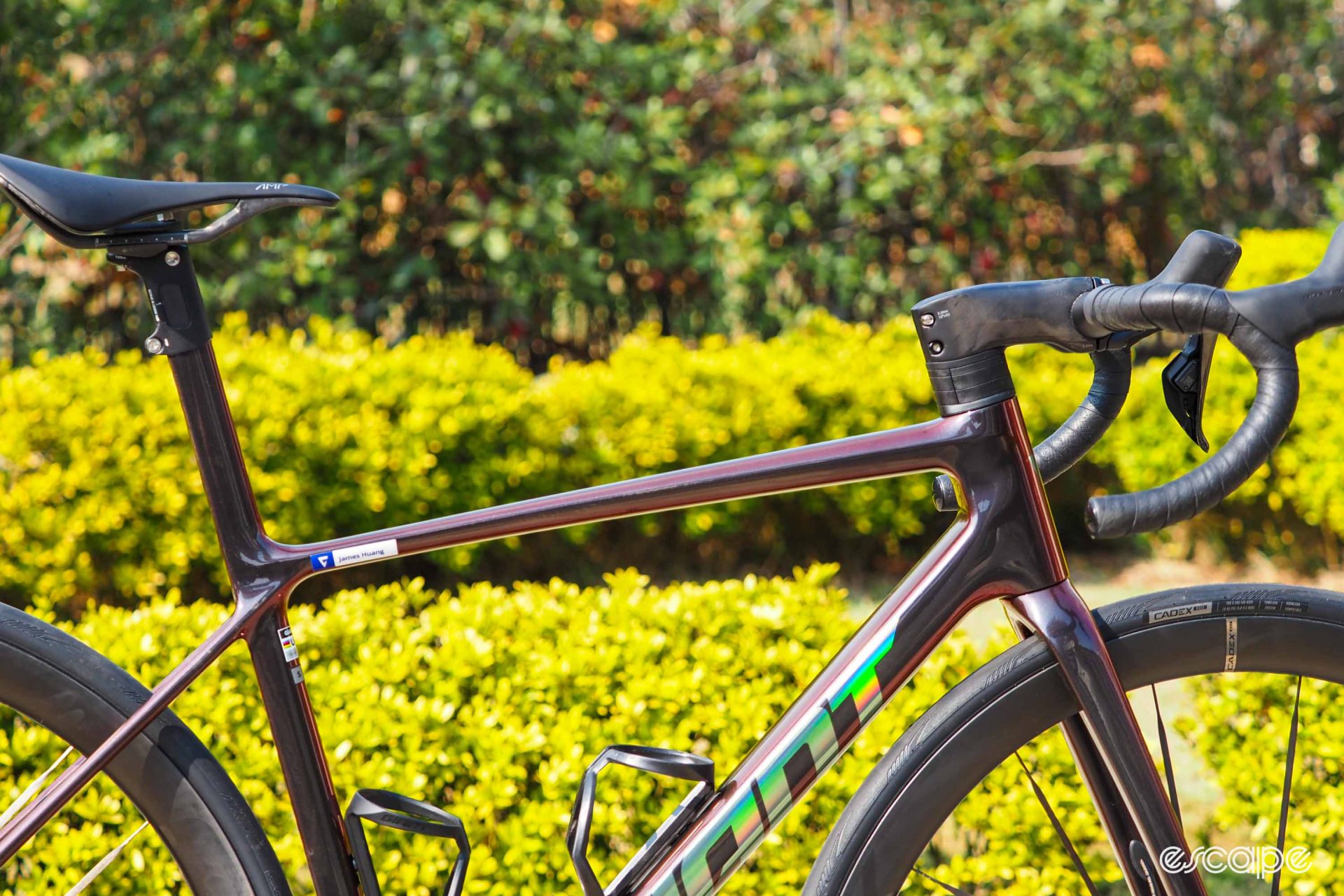
According to Wollny, the room was nearly evenly split on which direction to go. Ultimately, it came down to numbers – and the good kind, not dollars and cents.
“One of my colleagues, a structural engineer who has a lot of experience with the carbon factory, said we can do A including aerodynamics,” Wollny continued. “We set up the targets with how much weight we can lose on the frame and how much we can do on the wheels, and so on. We almost kept all of the targets. We had to make compromises in weight on the frame, and a compromise in weight for the wheels. But instead of gaining 100 g on the frame, we only gained 65 g [compared to how light the TCR could have been in Scenario A].”
So as a result, we have the semi-aero TCR you see now. But based on Wollny’s figures, that also means Giant feels it’s more than capable of building a top-end carbon fiber road frame that can compete directly with something like the Aethos in the ultra-lightweight realm.
What might have been? Maybe we’ll find out with the 11th-generation TCR.
The tech
OK, so while the new TCR isn’t quite as light as it could have been, it’s still lighter than its predecessor. Giant says it achieved that lower weight through a few different means.
First and foremost, the shape of the frame was tweaked to reduce the overall surface area – just by 2%, but that’s still the most direct way to reduce the amount of material required, with the biggest changes seen at the top tube, seatpost, and the seatstays where they meet the seat tube. Most notably, the seatstays ditch the sort of “webbed” shape the previous generation had since there’s finally no longer any rim-brake variant of the TCR at all and no need for a rim brake mount.
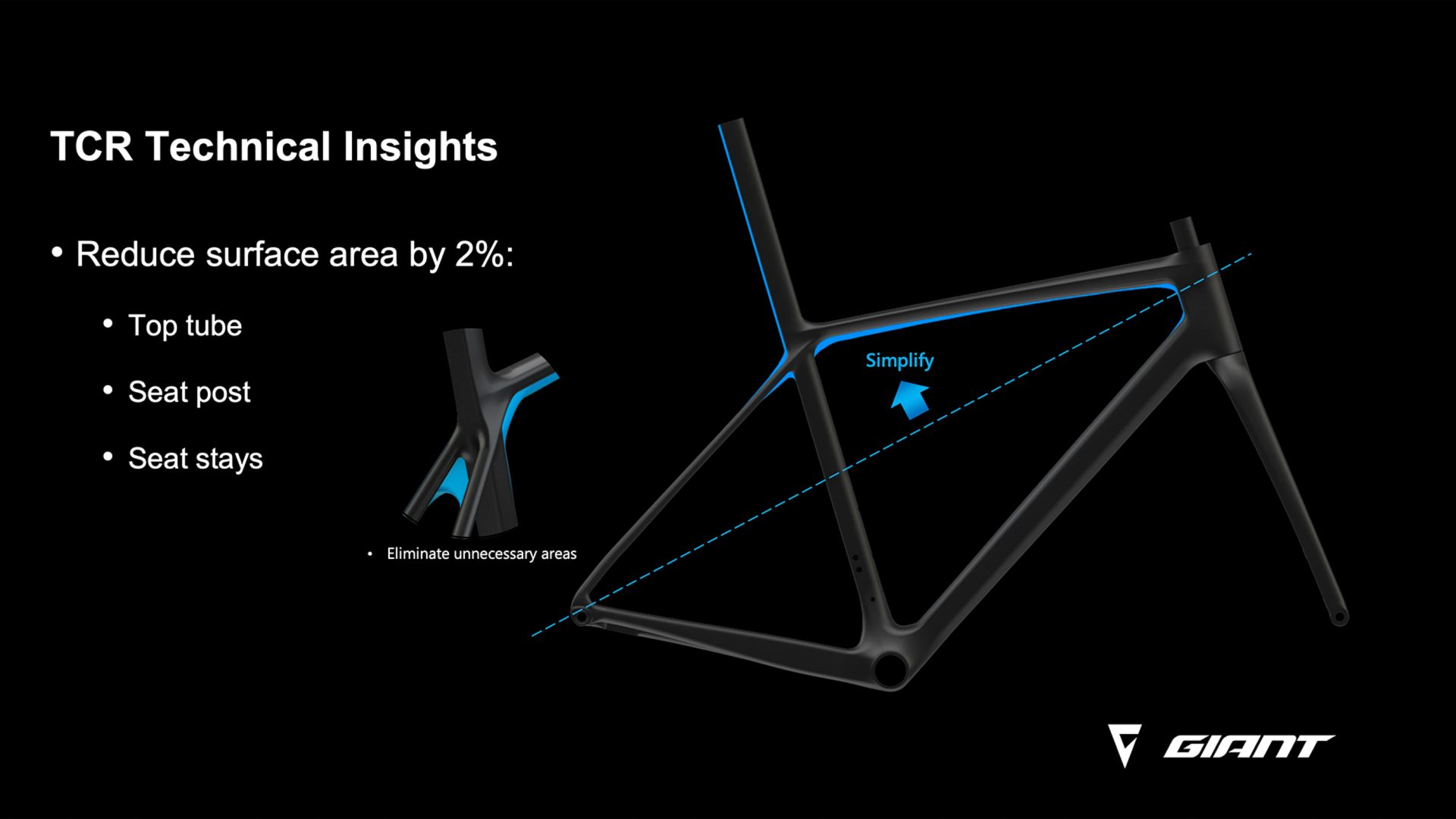
Giant also refined the way the frame is manufactured, with larger and fewer individual pieces of carbon fiber so there’s less excess material where the various pieces meet. More specifically, where the previous TCR Advanced SL frame was made of about 330 pieces of carbon, the new one supposedly uses just 270 of them.
A big reason for that reduction in pieces is that the front triangle is now laid up as a single structure in the mold right from the get-go, whereas the norm has been to do as pre-built subassemblies. In other words, instead of laying up the head tube, bottom bracket, seat cluster, and adjoining tubes separately and then combining them into the mold to cure as a complete front triangle, single pieces of carbon now span across those entire sections, which not only reduces ply overlaps and weight, but supposedly also reduces the need for fillers and simplifies the inner mold structures used during the curing process.
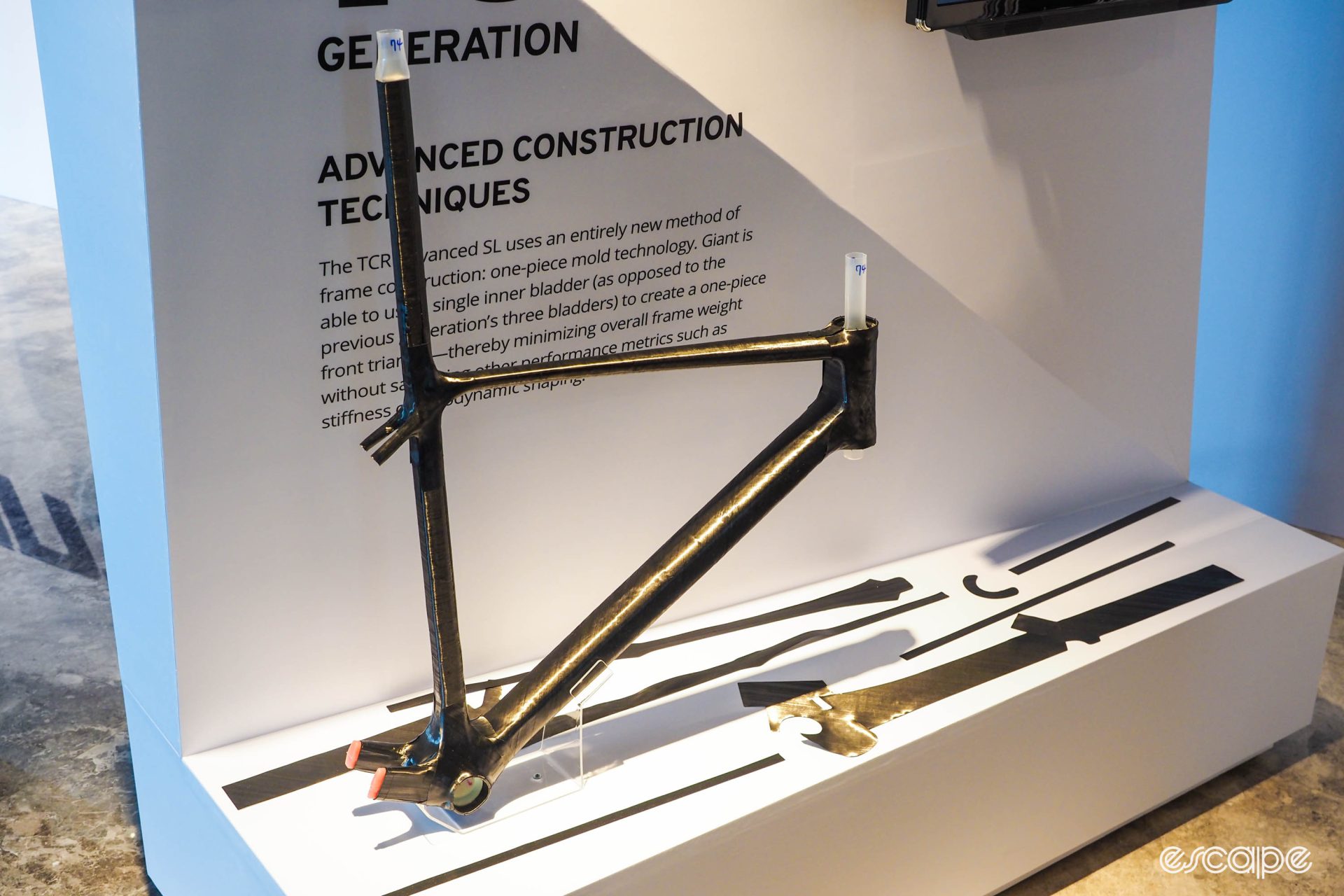
Giant says this updated construction method is also part of the reason the new TCR is a bit stiffer, together with some subtle shape refinements at the bottom bracket area, head tube, down tube, and fork crown. But again, the improvement is awfully modest, and it almost seems like the bigger objective was just maintaining the existing model’s stiffness figures despite the weight loss.
More of the same – with one notable exception
Otherwise, a lot of aspects about the new TCR will look awfully familiar – for better or worse.
Giant is sticking by its longstanding PF86 press-fit bottom bracket shell format for this latest tenth-generation TCR, resisting the recent trend of brands reverting back to more traditional English-threaded setups. Why? Well, that additional shell width is critical to achieving those weight and stiffness targets, and in Giant’s defense, the brand has more than proven over the years that it can build frames with good tolerances.
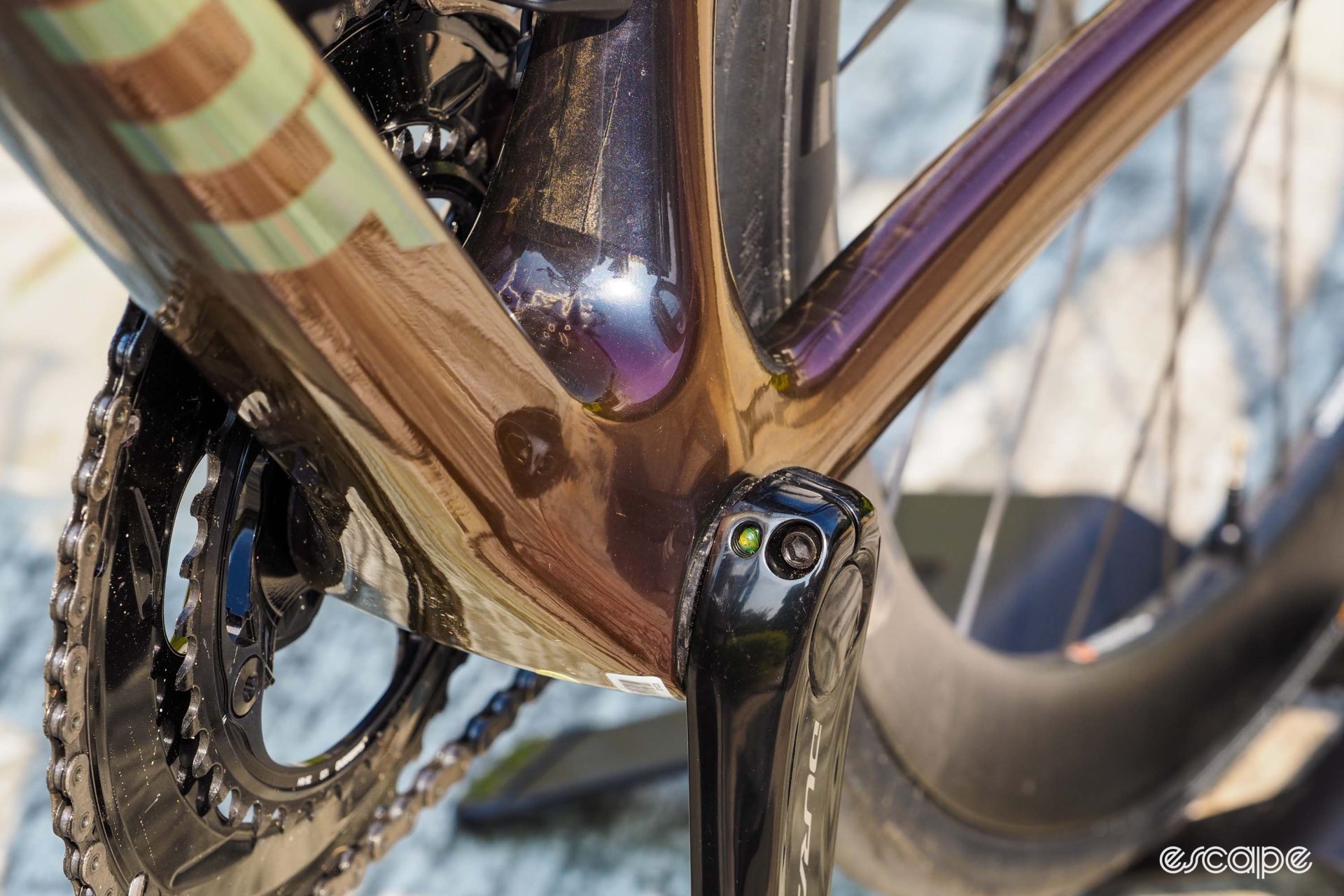
Up top, Giant is also continuing with an integrated seatmast for the flagship TCR Advanced SL version. It still has to be cut to fit and can complicate packing a bike for travel, however Giant insists the seatmast design is still lighter, more aerodynamic, and rides better than any conventional telescoping design.
Also carrying over is Giant’s own replaceable rear derailleur hanger fitment instead of the SRAM UDH format that’s slowly been gaining ground on the road, and while the overall shape and design language of the new TCR is very similar to what it replaced, it’s nevertheless cleaner and sleeker looking overall.
One change that may be a little controversial, though? Yep, Giant finally caved to market pressure on the TCR and went with hidden cabling through the upper headset assembly. It at least uses the same OverDrive Aero D-shaped steerer tube design as the Propel, so the head tube is still a normal size and most stems can be swapped without doing any major surgery since the brake lines run below the extension instead of through it. Apparently the faction within Giant that successfully pushed to keep the partially external routing on the ninth-gen model for its serviceability advantage lobbied to do it again on this one, but we all know how those arguments go these days. The added complexity and hardware wipes out almost half of the weight decreases that were so hard-fought on the frame, and even Giant acknowledges that the aero gains from hiding the lines away were minimal at best.
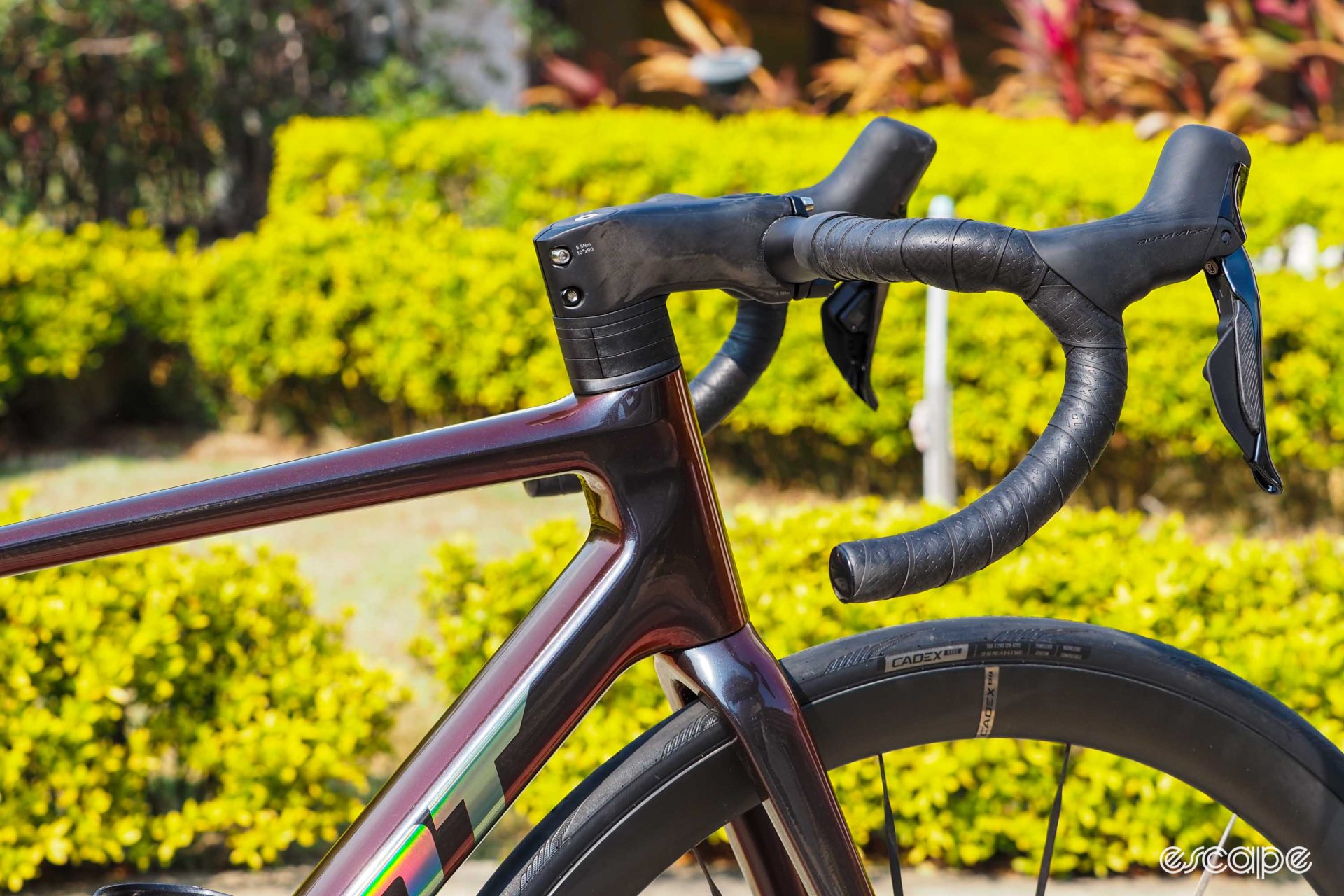
“It would unfair for us to guesstimate the specific gains of just the cabling (with and without) because so many other features of the TCR Advanced SL have changed since the previous version,” explained Giant’s senior global product marketing manager, Andrew Juskaitis. “From what we’ve garnered, it’s not much.”
Alas, even the strongest salmon can only swim upstream for so long.
Geometry-wise, it’s business as usual, with each of the six available sizes carrying forward unchanged from last year, down to the millimeter.

Oh, and wondering about the largest allowable tire width? That’d be 33 mm. This isn’t meant to serve double-duty as an all-road or “gravel lite” sort of rig.
Good, better, best
As before, Giant is offering the new TCR in three different tiers. The flagship TCR Advanced SL version gets all the bells and whistles, and it’s obviously the lightest/stiffest/etc. of the lot.
The middle-child TCR Advanced Pro gets the same frame shape, but with a telescoping aero-profile seatpost instead of the integrated mast and Giant’s “Advanced” grade of carbon fiber instead of the fancier stuff used on its big brother (the fork is shared with the SL). Below that is the standard TCR Advanced, which also uses a telescoping seatpost but uses that more economical carbon fiber blend in both the frame and fork.
Claimed weight for an unpainted medium TCR Advanced Pro or TCR Advanced frame is 800 g (plus another 82-95 g for paint), while the Advanced-level fork is 52 g heavier than the SL version. Giant also says the TCR Advanced Pro frameset is about 6% less stiff than the TCR Advanced SL, while the TCR Advanced takes a bigger hit at nearly 10%. Aero differences are negligible.
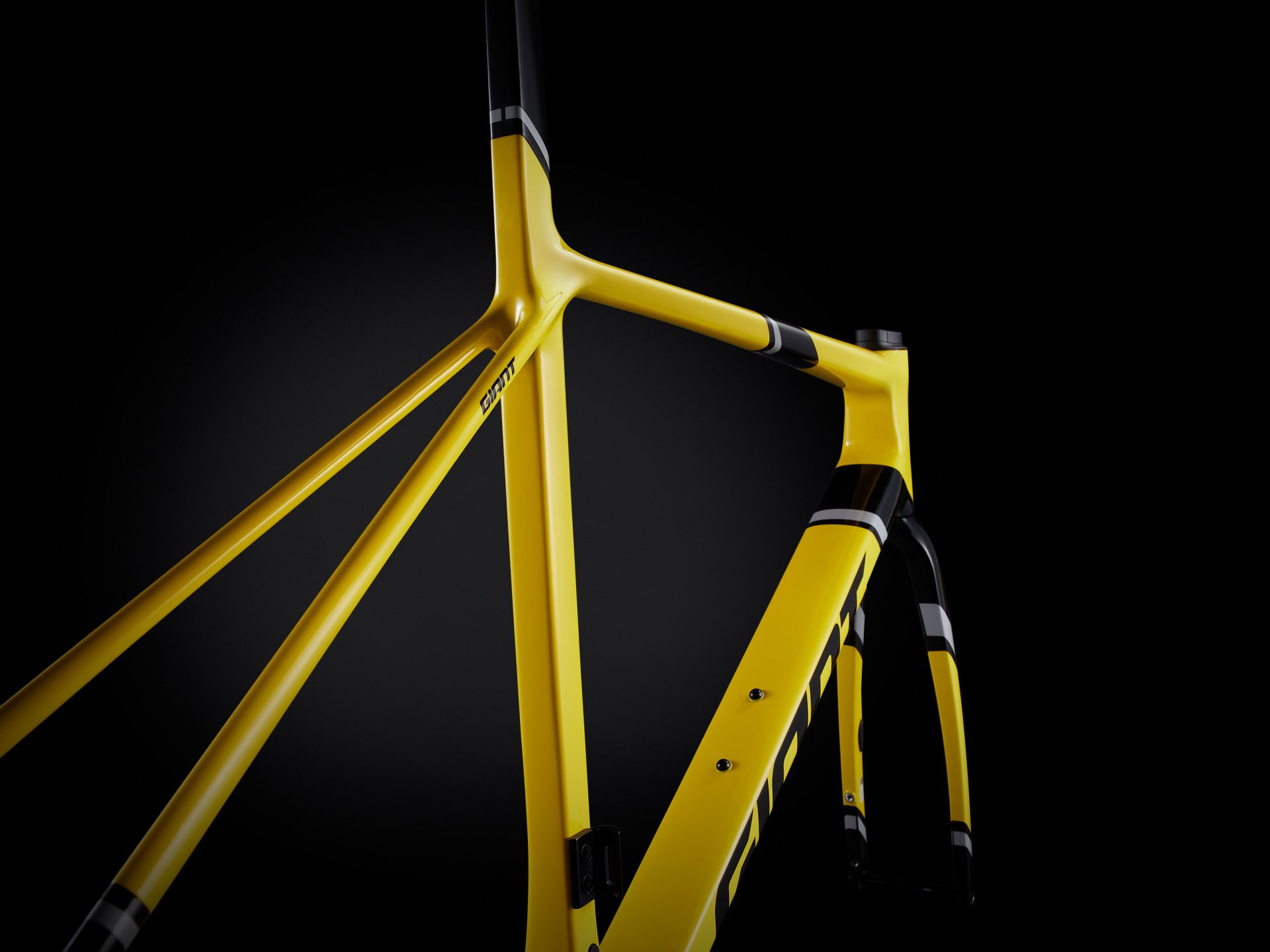
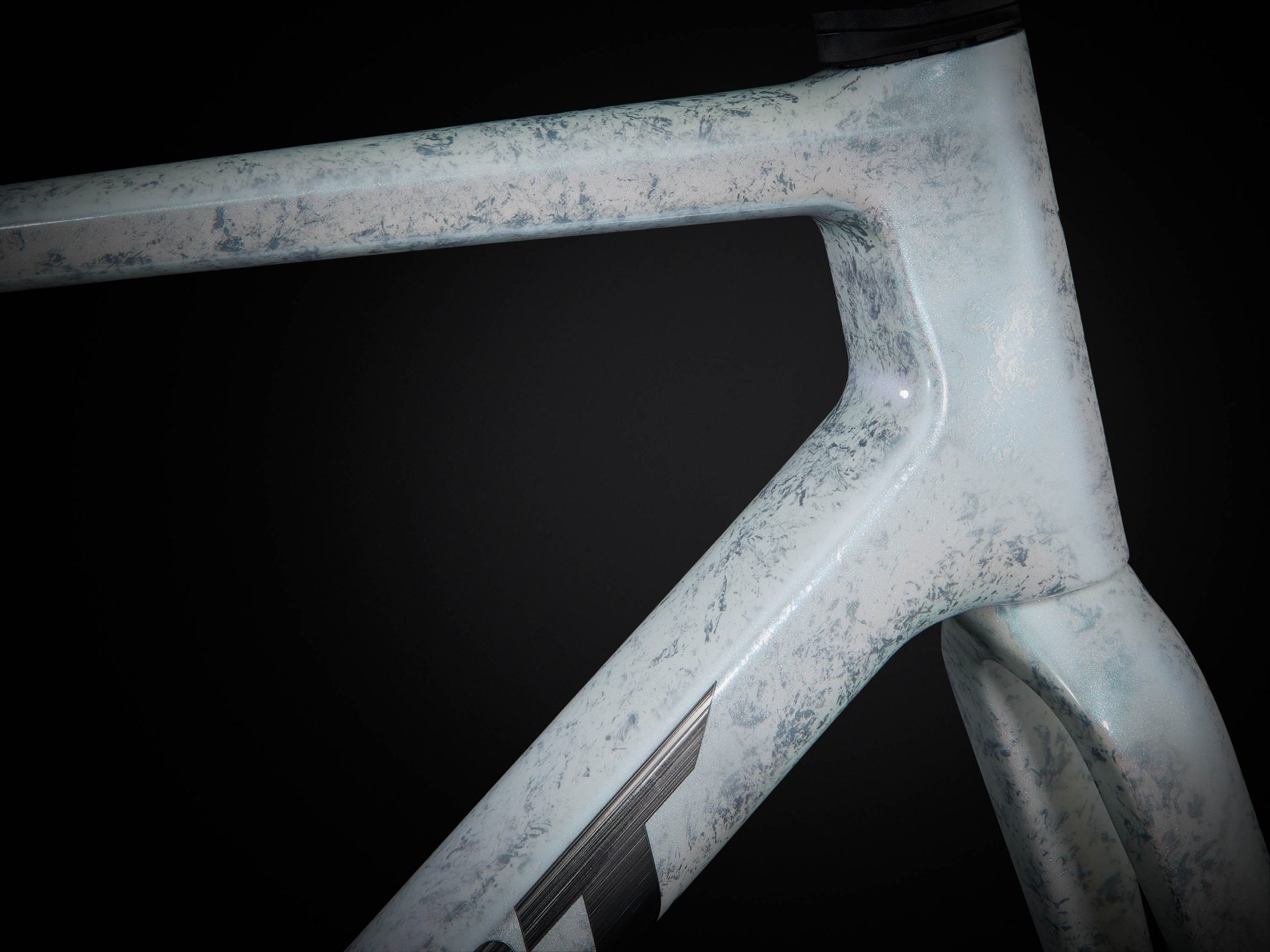
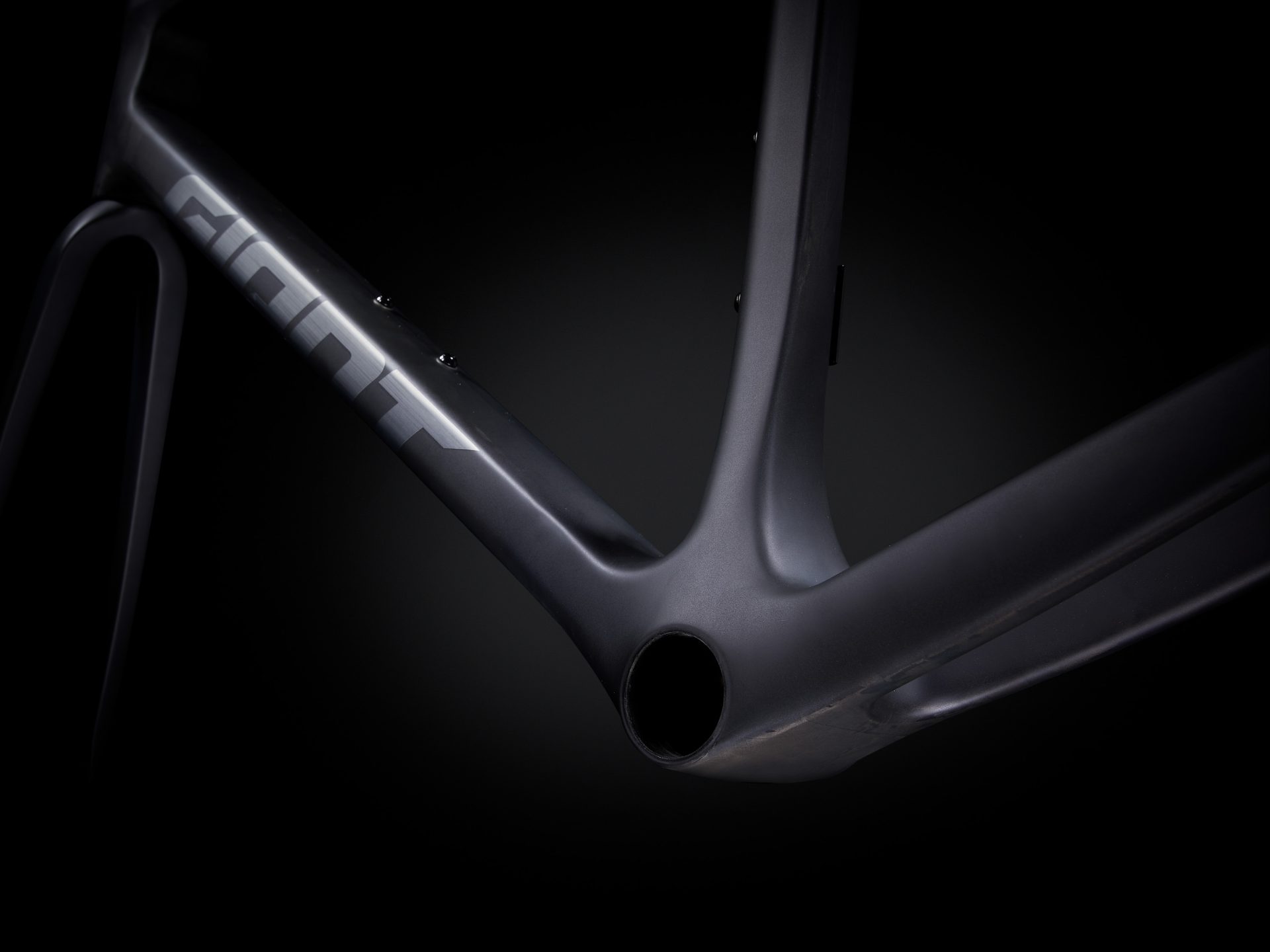
Depending on sales region, there will be up to three TCR Advanced SL complete builds, seven TCR Advanced Pro ones, and six base-model TCR Advanced models – many of which come stock with power meters – plus bare framesets. As already mentioned, Giant has finally done away with any rim-brake TCR models completely, but Advanced and Advanced Pro frames will maintain compatibility with mechanical drivetrains; Advanced Pro SL is electronic-only.
Brief specs, claimed weights, and retail prices are as follows (and note there are no SRAM Red builds listed – take that as you will):
TCR Advanced SL
| Model | Groupset | Power Meter | Wheels | Pricing |
| TCR Advanced SL 0 Di2 | Shimano Dura-Ace Di2 | Shimano FC-9200P | Cadex Max 40 | US$12,500 / AU$13,800 / £12,000 / €12,300 |
| TCR Advanced SL 1 Di2 | Shimano Ultegra Di2 | Giant Power Pro | Giant SLR 0 40 | US$n/a / AU$9,500 / £8,000 / €8,300 |
| TCR Advanced SL 1 AXS | SRAM Force AXS | SRAM | Giant SLR 0 40 | US$n/a / AU$n/a / £9,000 / €8,500 |
| TCR Advanced SL frameset | N/A | N/A | N/A | US$3,800 / AU$5,300 / £3,500 / €3,700 |
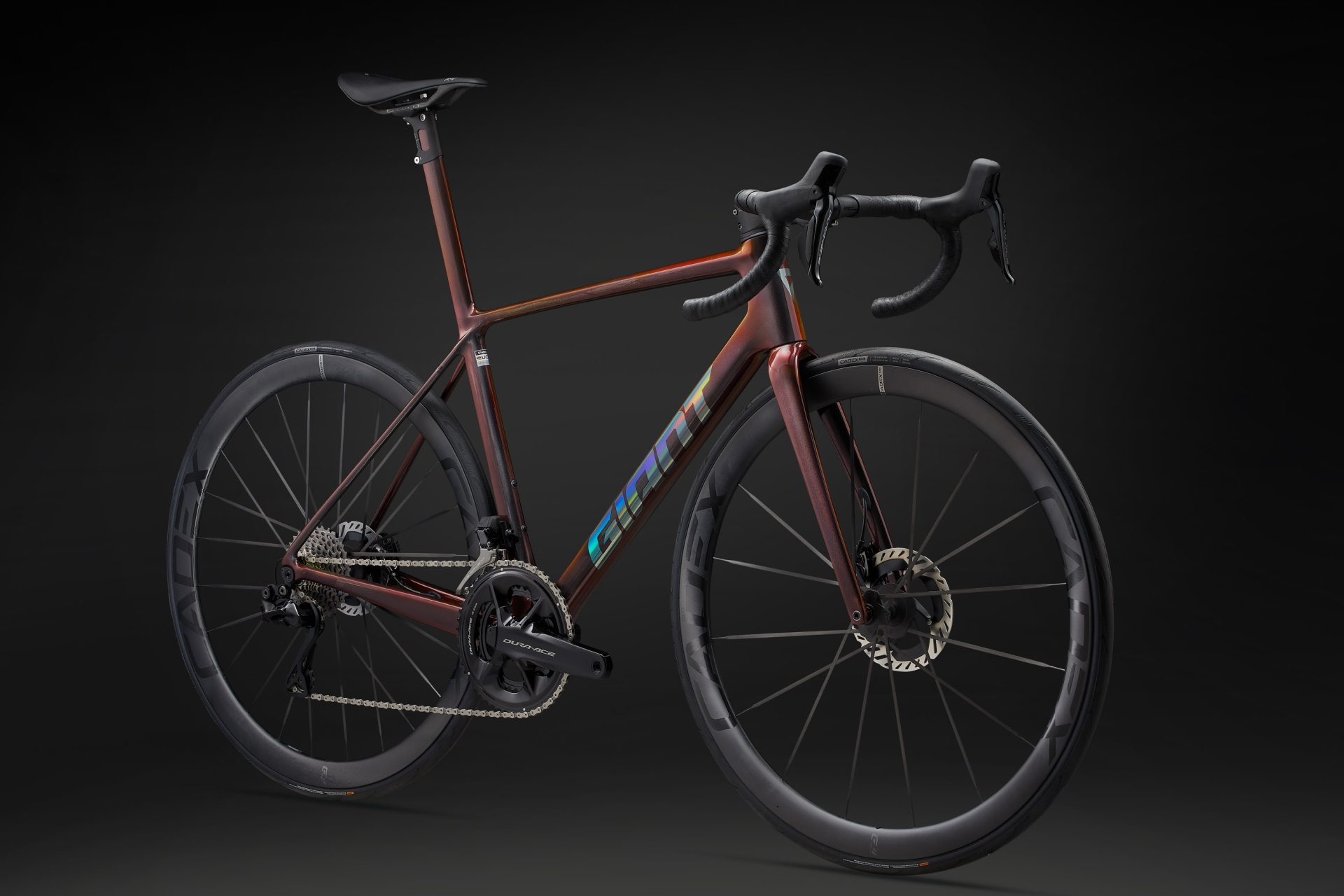

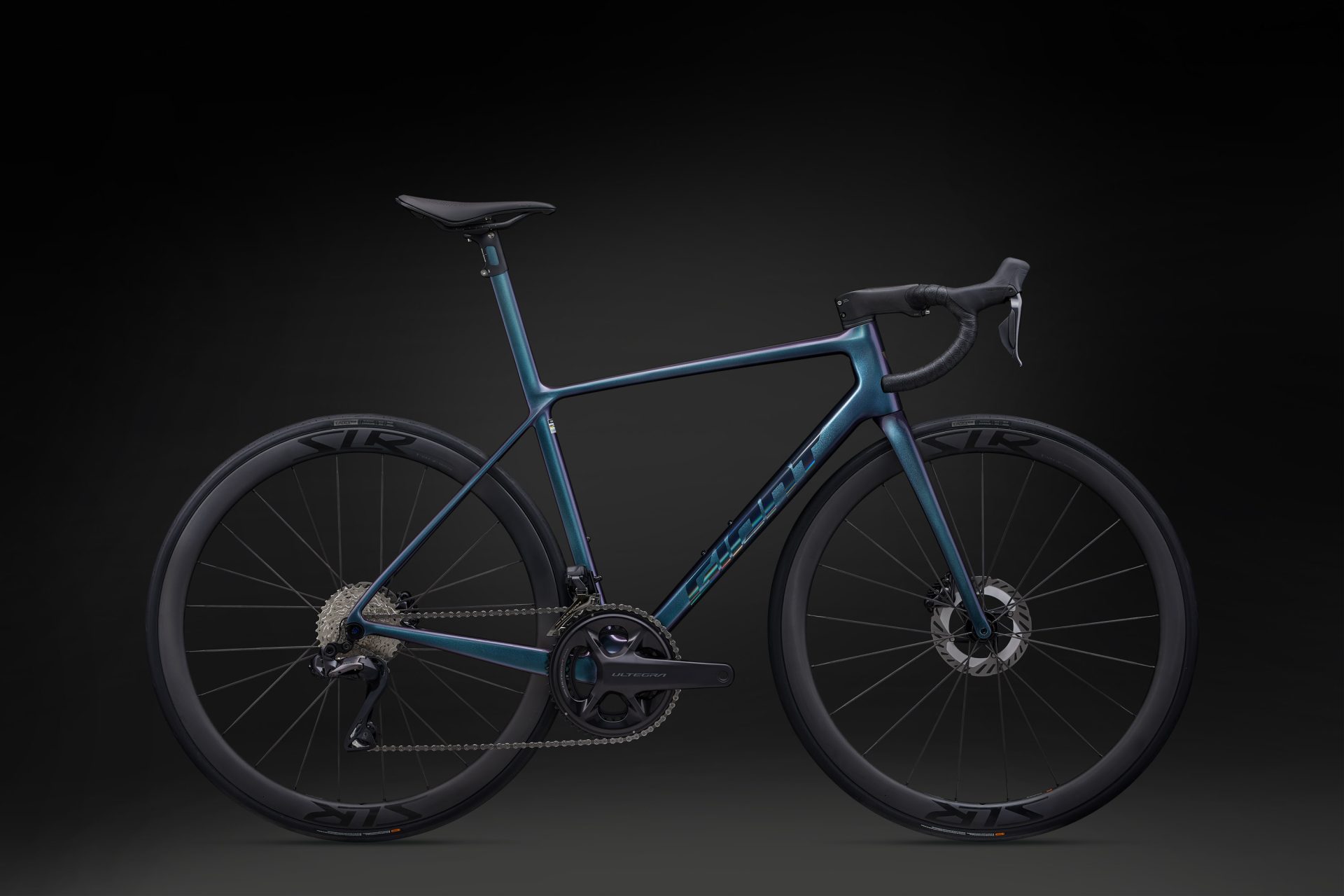
TCR Advanced Pro
| Model | Groupset | Power Meter | Wheels | Pricing |
| TCR Advanced Pro 0 AXS | SRAM Force AXS | SRAM | Giant SLR 0 40 | US$n/a / AU$n/a / £6,700 / €6,800-7,000 |
| TCR Advanced Pro 0 Di2 | Shimano Ultegra Di2 | Giant Power Pro | Giant SLR 0 40 | US$6,500 / AU$8,200 / £6,500 / €6,500 |
| TCR Advanced Pro 1 AXS | SRAM Rival AXS | Giant Power Halo | Giant SLR 1 40 | US$n/a / AU$n/a / £5,000 / €5,100 |
| TCR Advanced Pro 1 Di2 | Shimano 105 Di2 | Giant Power Pro | Giant SLR 1 40 | US$5,500 / AU$6,800 / £4,900 / €4,700-4,800 |
| TCR Advanced Pro 2 | Shimano 105 | Giant Power Pro | Giant SLR 1 40 | US$n/a / AU$n/a / £4,000 / €2,800 |
| TCR Advanced Pro frameset | N/A | N/A | N/A | US$2,400 / AU$n/a / £2,000 / €2,500 |
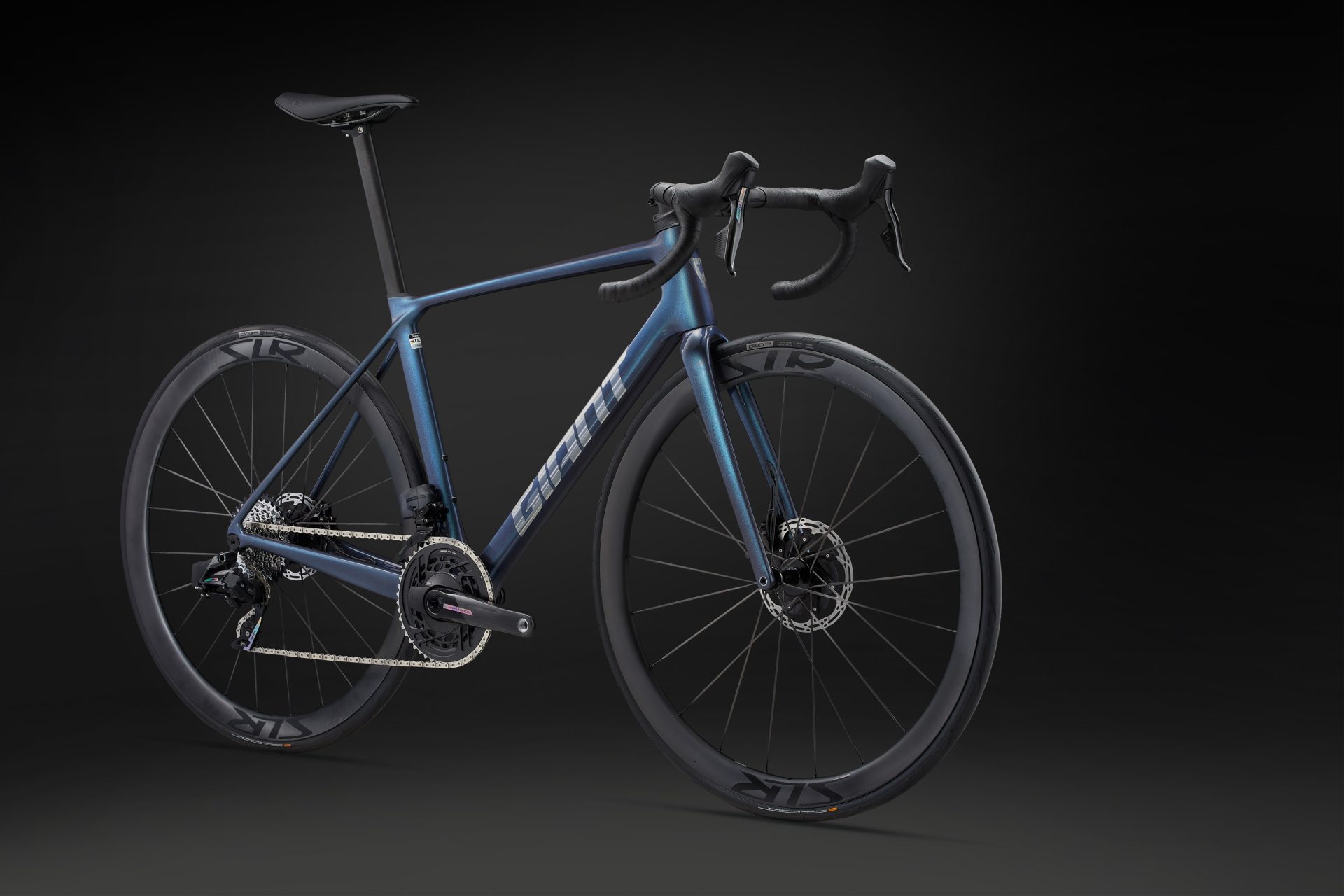
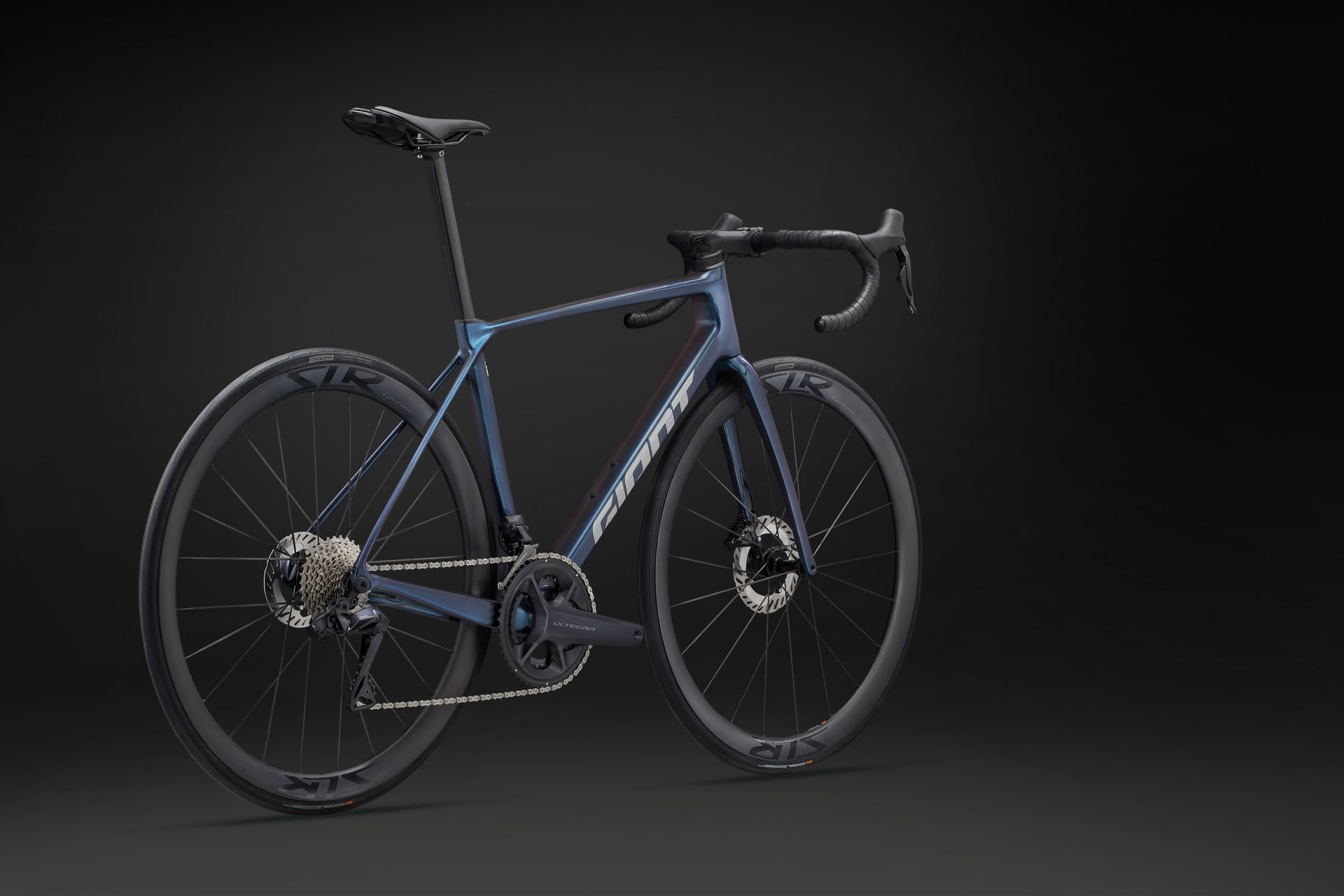
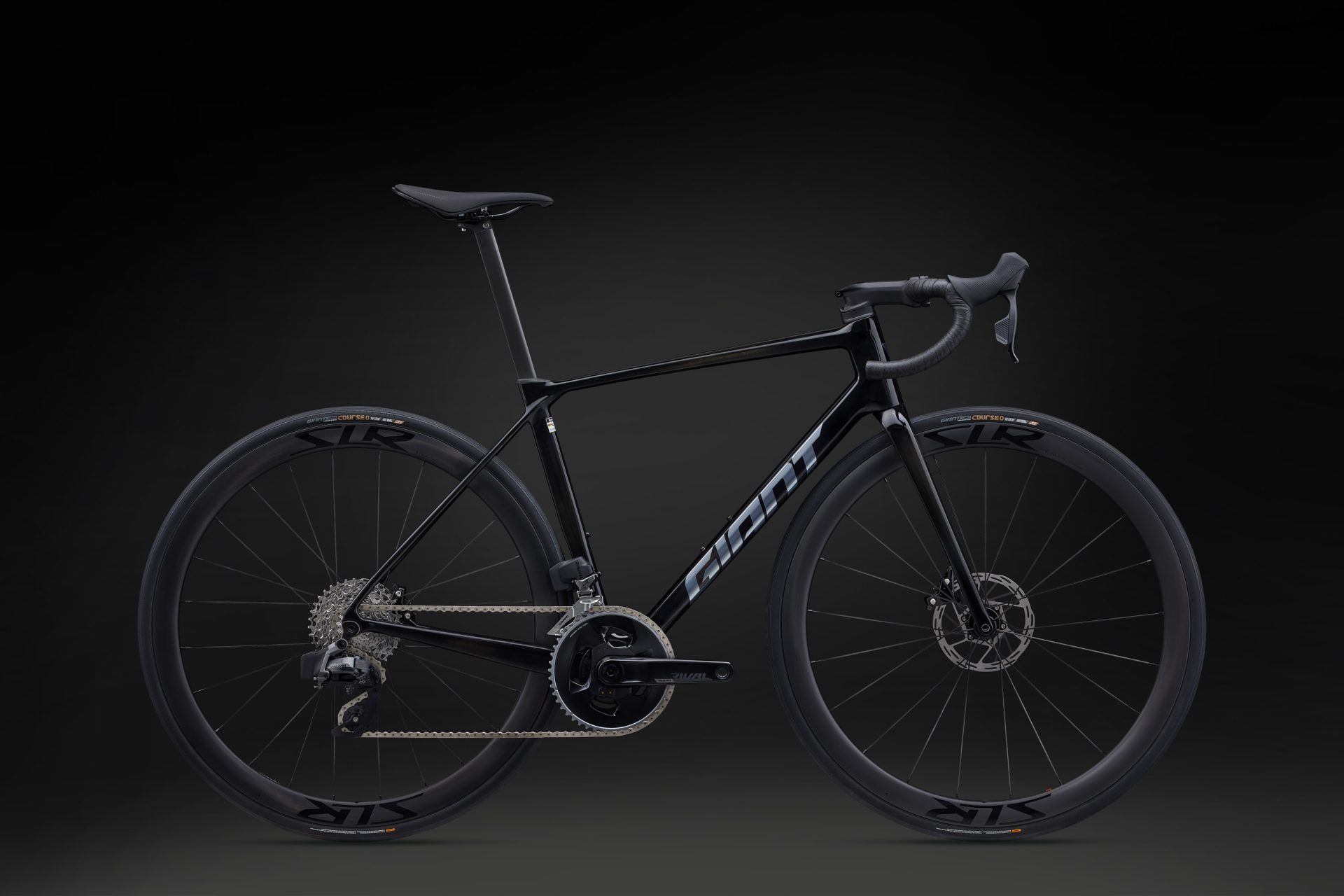
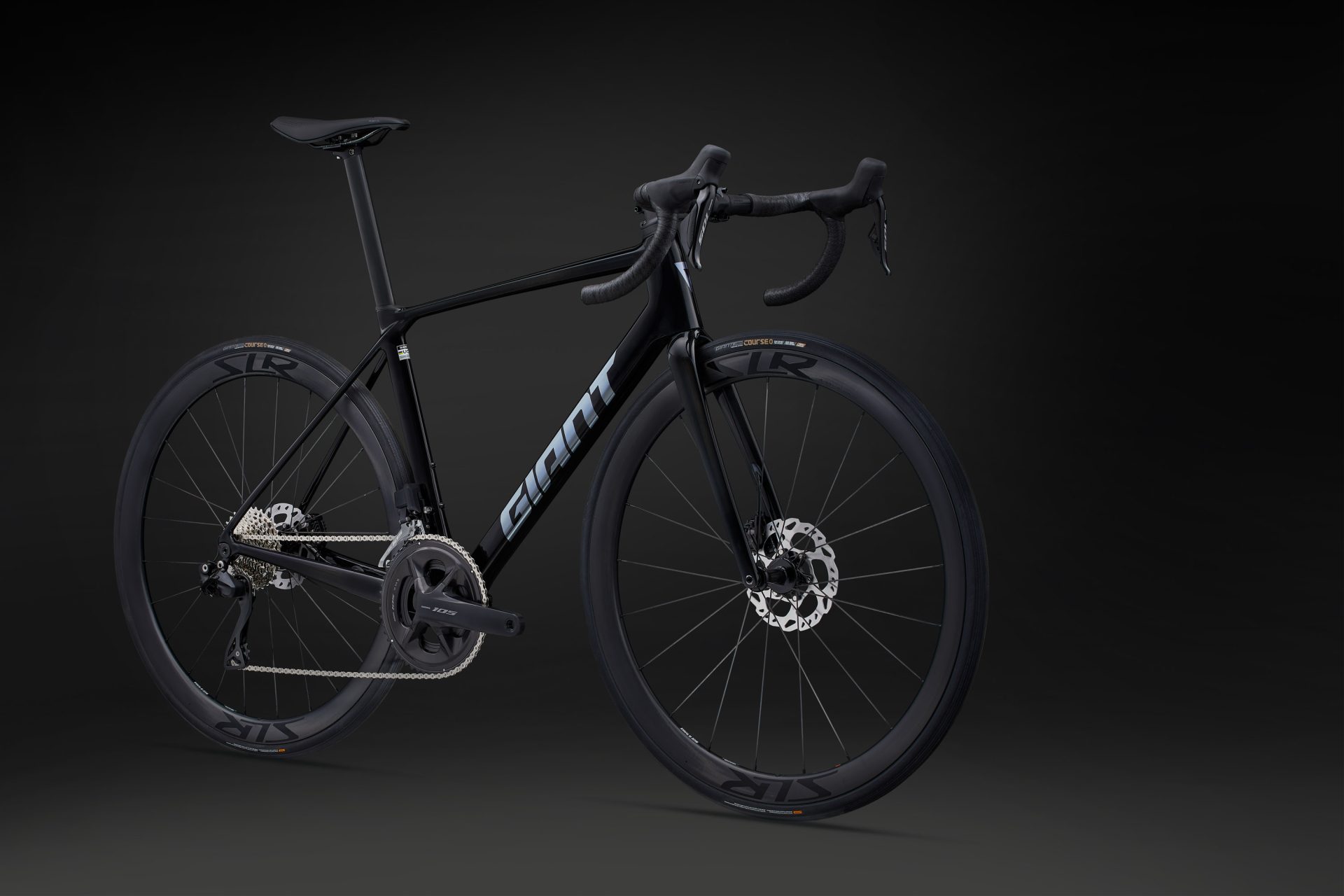
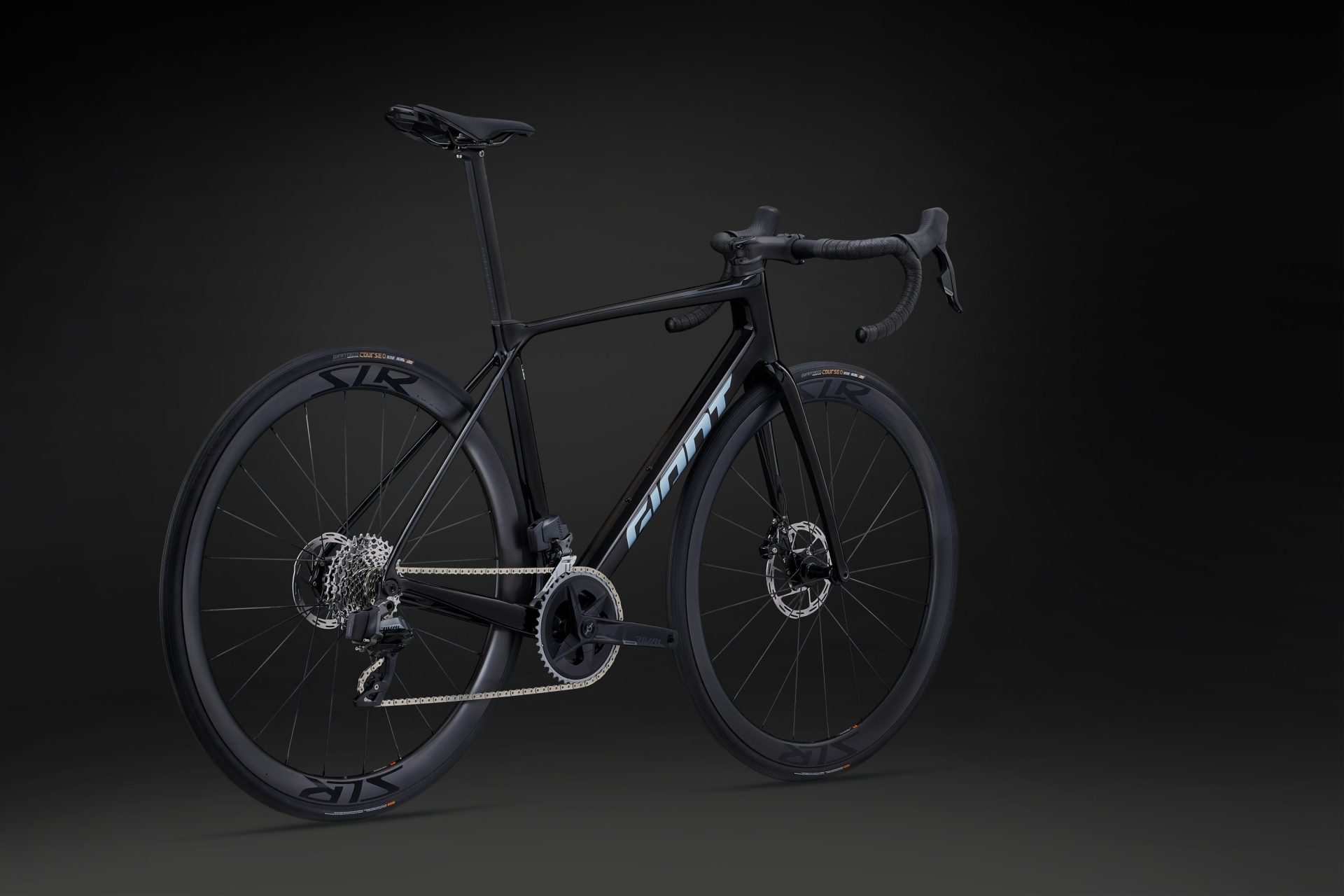
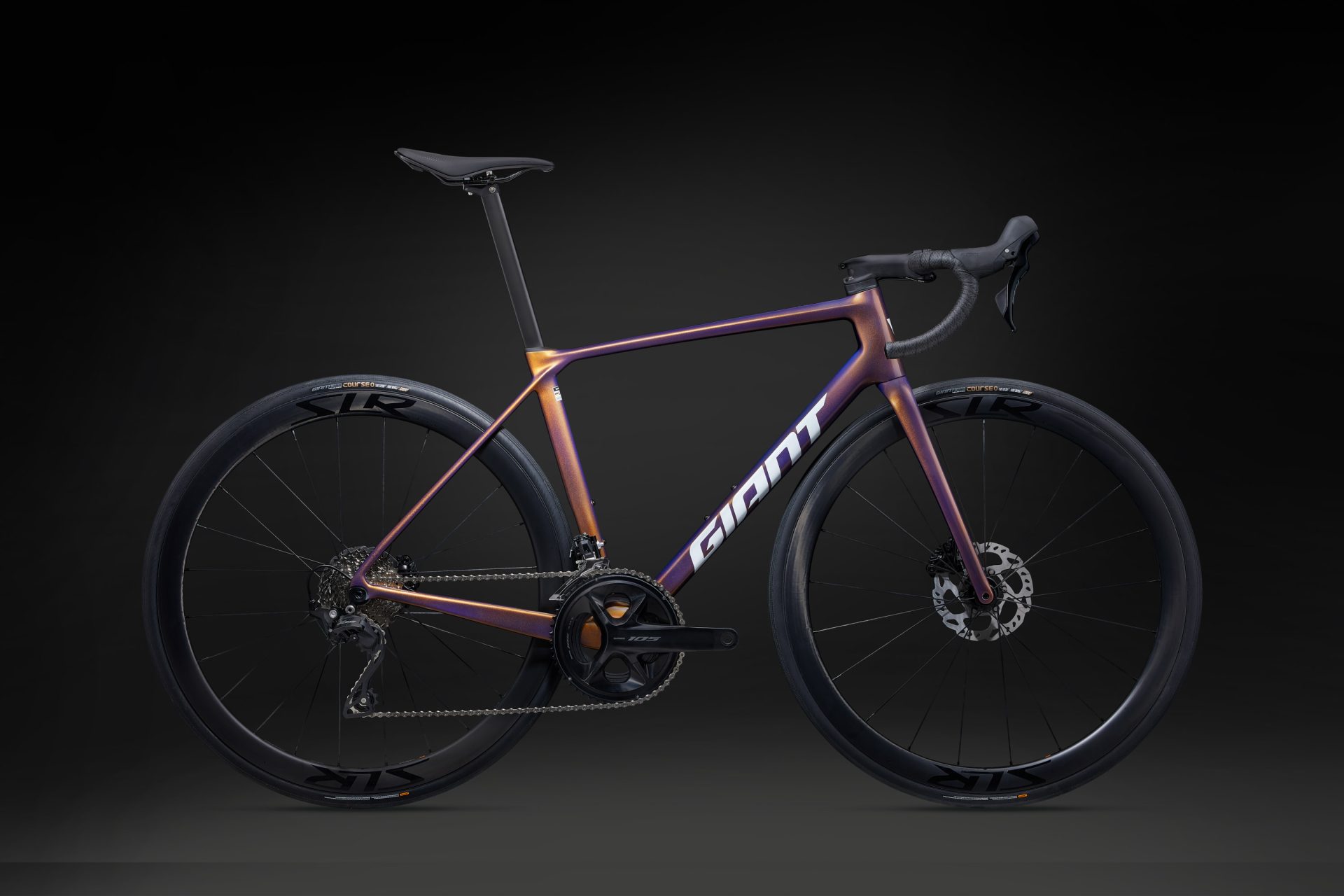
TCR Advanced
| Model | Groupset | Wheels | Pricing |
| TCR Advanced 0 AXS | SRAM Rival AXS | Giant SLR 2 36 | US$n/a / AU$n/a / £3,800 / €n/a |
| TCR Advanced 0 Pro Compact Di2 | Shimano 105 Di2 | Giant SLR 2 36 | US$4,700 / AU$n/a / £3,700 / €4,000 |
| TCR Advanced 1 Pro Compact Di2 | Shimano 105 Di2 | Giant P-R2 | US$n/a / AU$5,000 / £3,200 / €3,500 |
| TCR Advanced 2 Pro Compact | Shimano 105 | Giant P-R2 | US$3,200 / AU$3,800 / £2,700 / €2,800 |
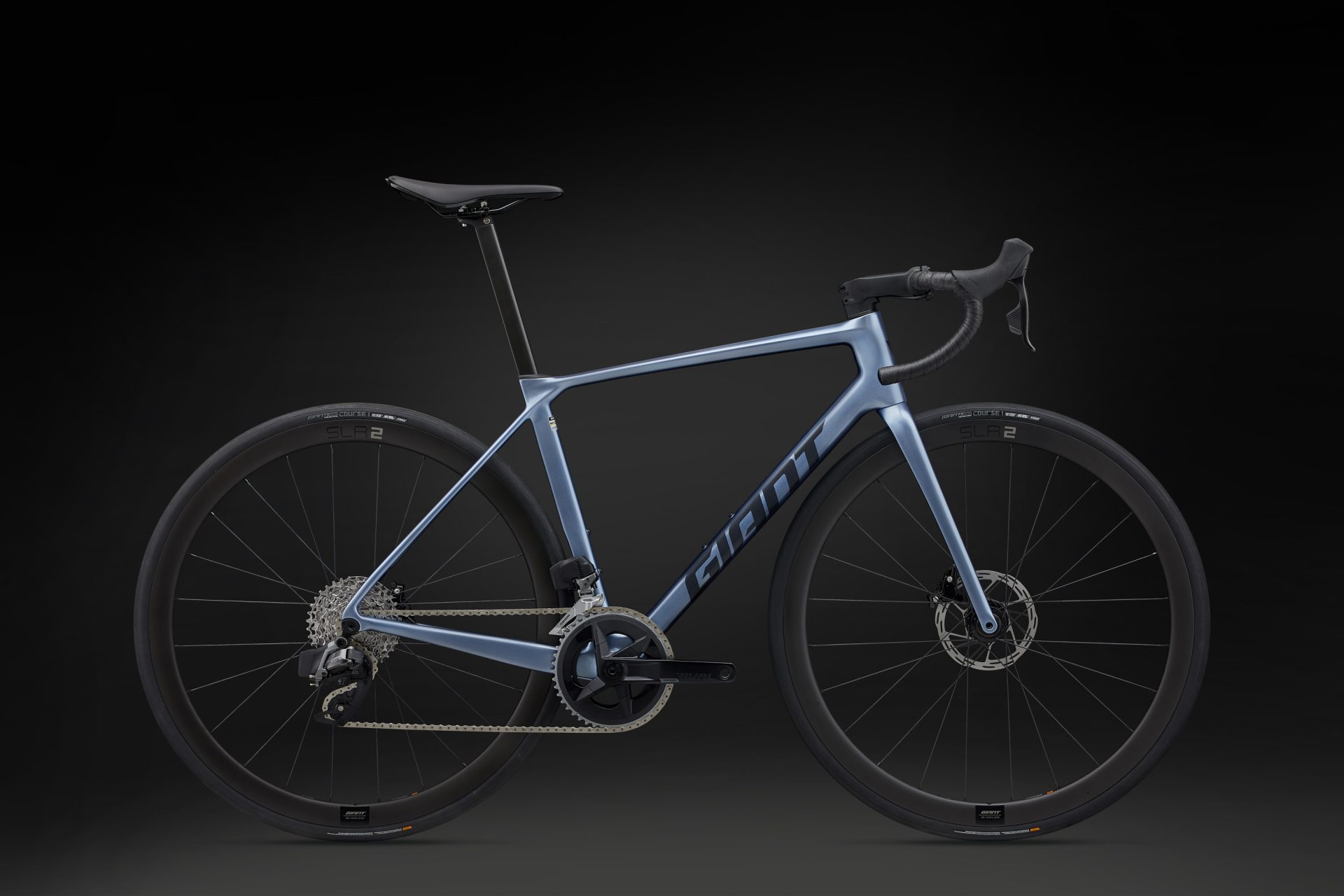
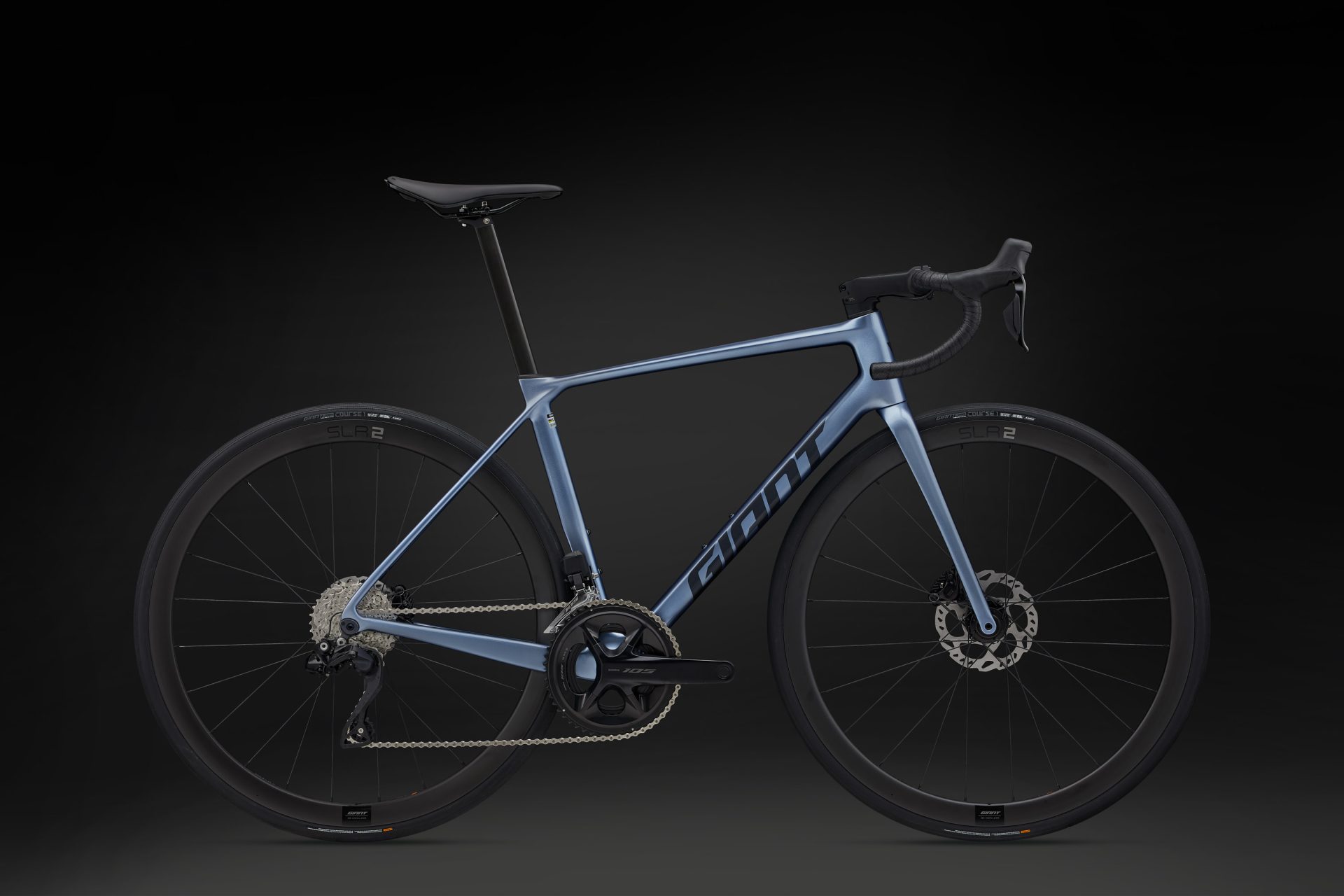
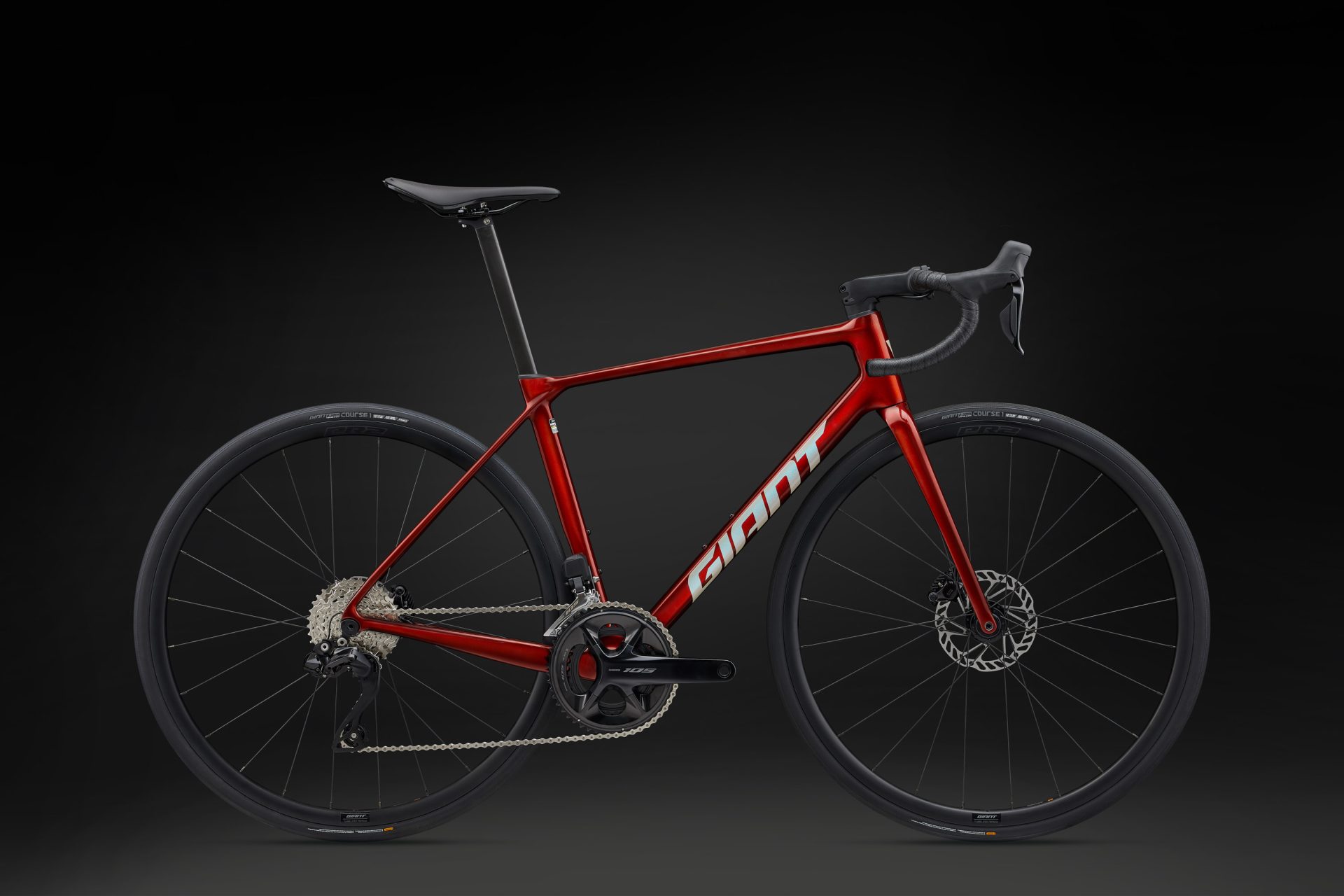
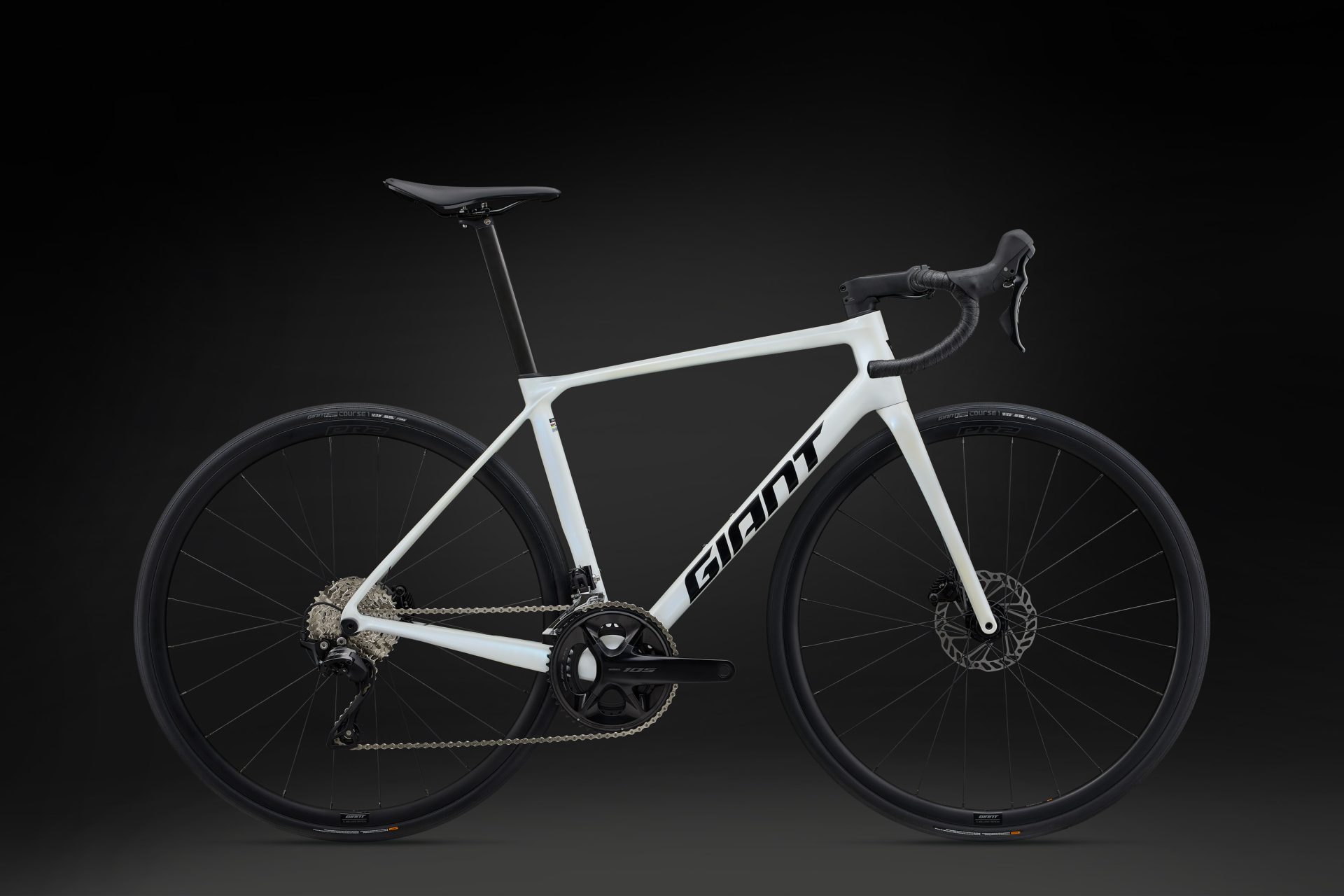
There are also four “KOM” models offered in very limited markets across the TCR Advanced Pro and TCR Advanced families, each with easier climbing gears.
A whole bunch of new Cadex bits, too
Giant has made its own wheels and components for ages now, but this generation of TCR is the first time I can recall the company truly emphasizing how much it was all designed to go together – apparently because it’s actually the first time everything was developed in cooperation with each other.
One key component to the new TCR range are the latest Cadex Max 40 wheels. As the name suggests, they feature a 40 mm-deep aero-profile carbon fiber rim and are intended for all-around road-racing use with a 22.4 mm-wide (internal width) tubeless-compatible and hookless tire bed. And as is now typical for the Cadex brand, the spokes are carbon fiber, but with a particularly deep bladed profile here for aerodynamic efficiency. The Max 40 wheels are quite light with a sub-1,250 g claimed weight, but they’re not silly-light.
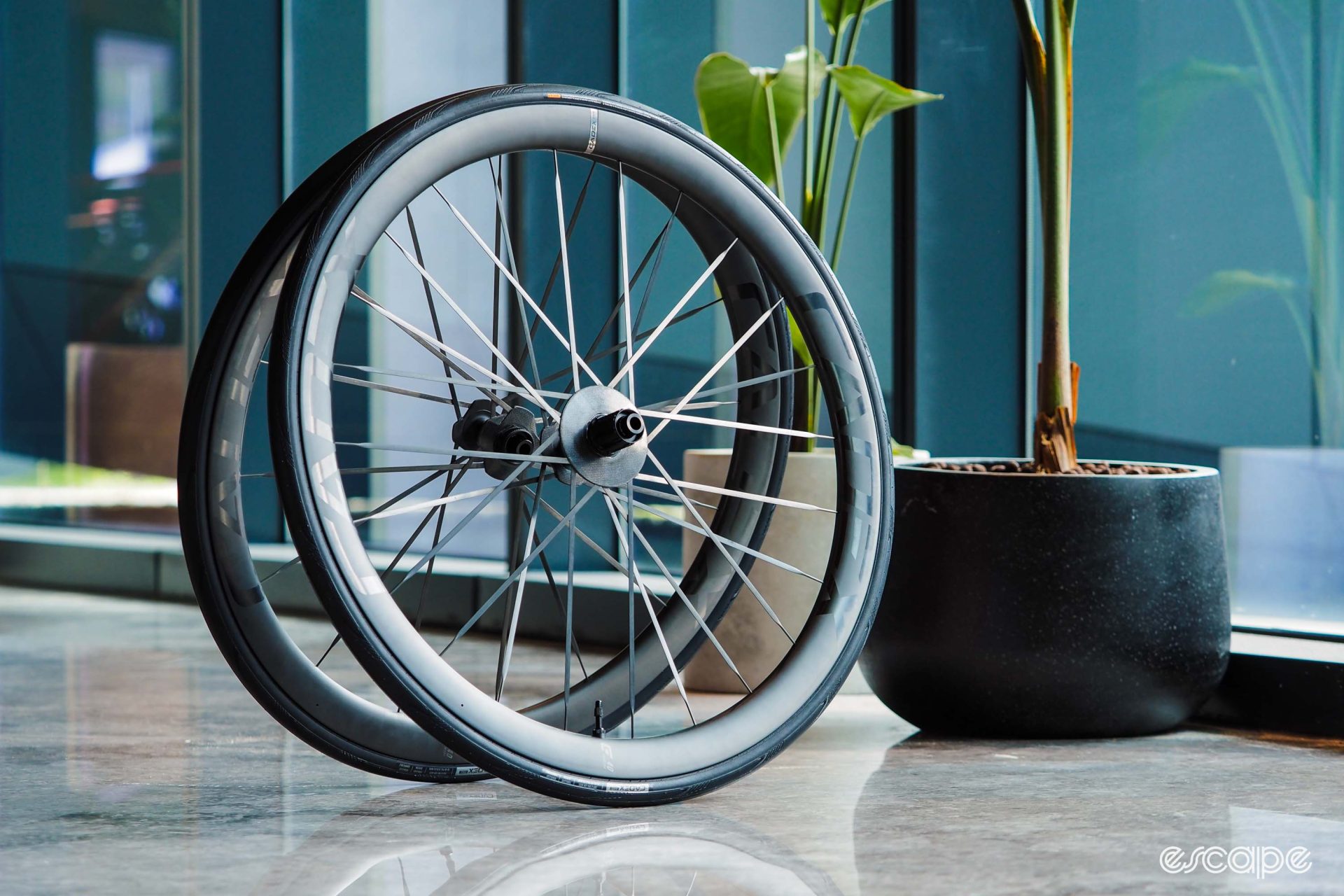
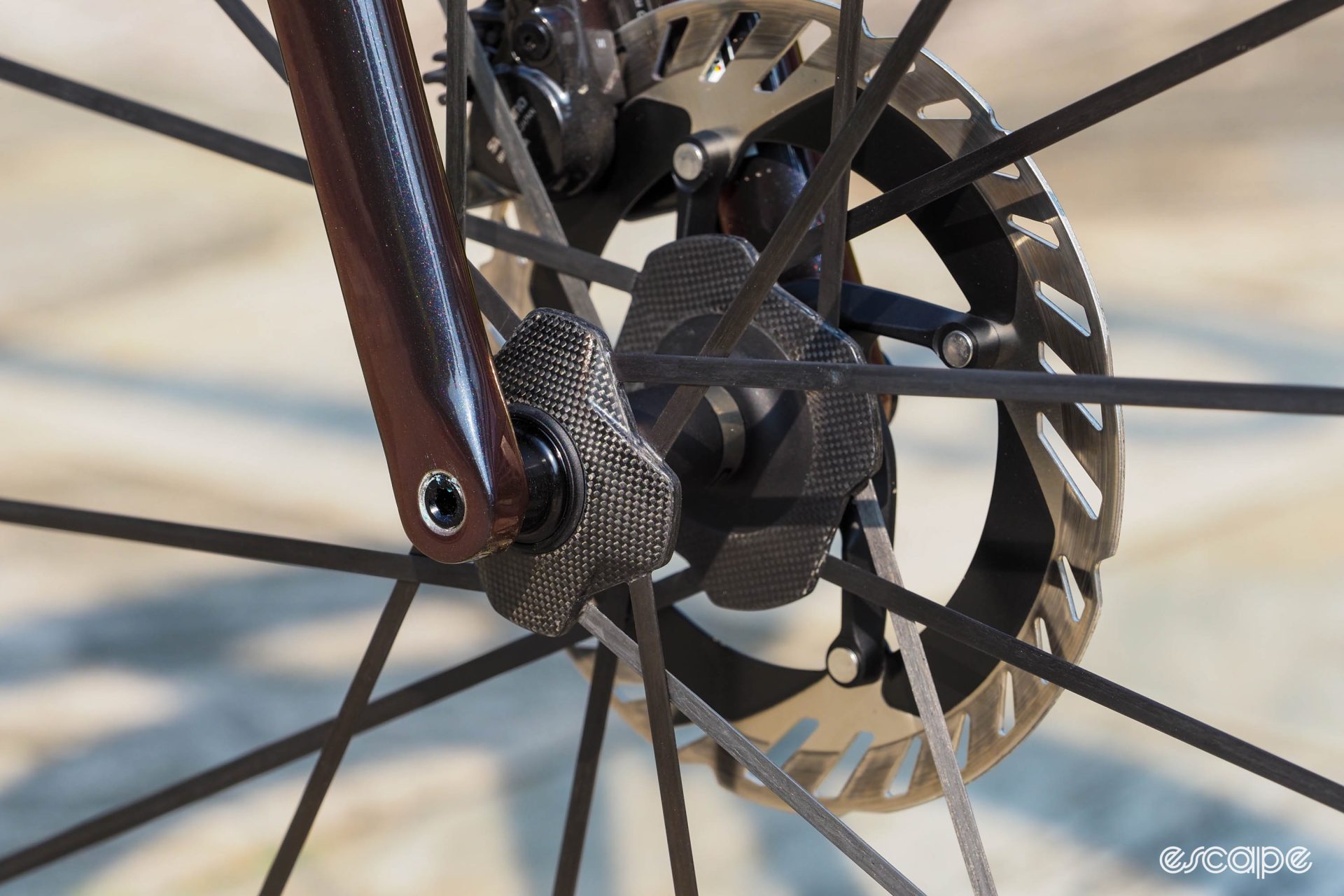
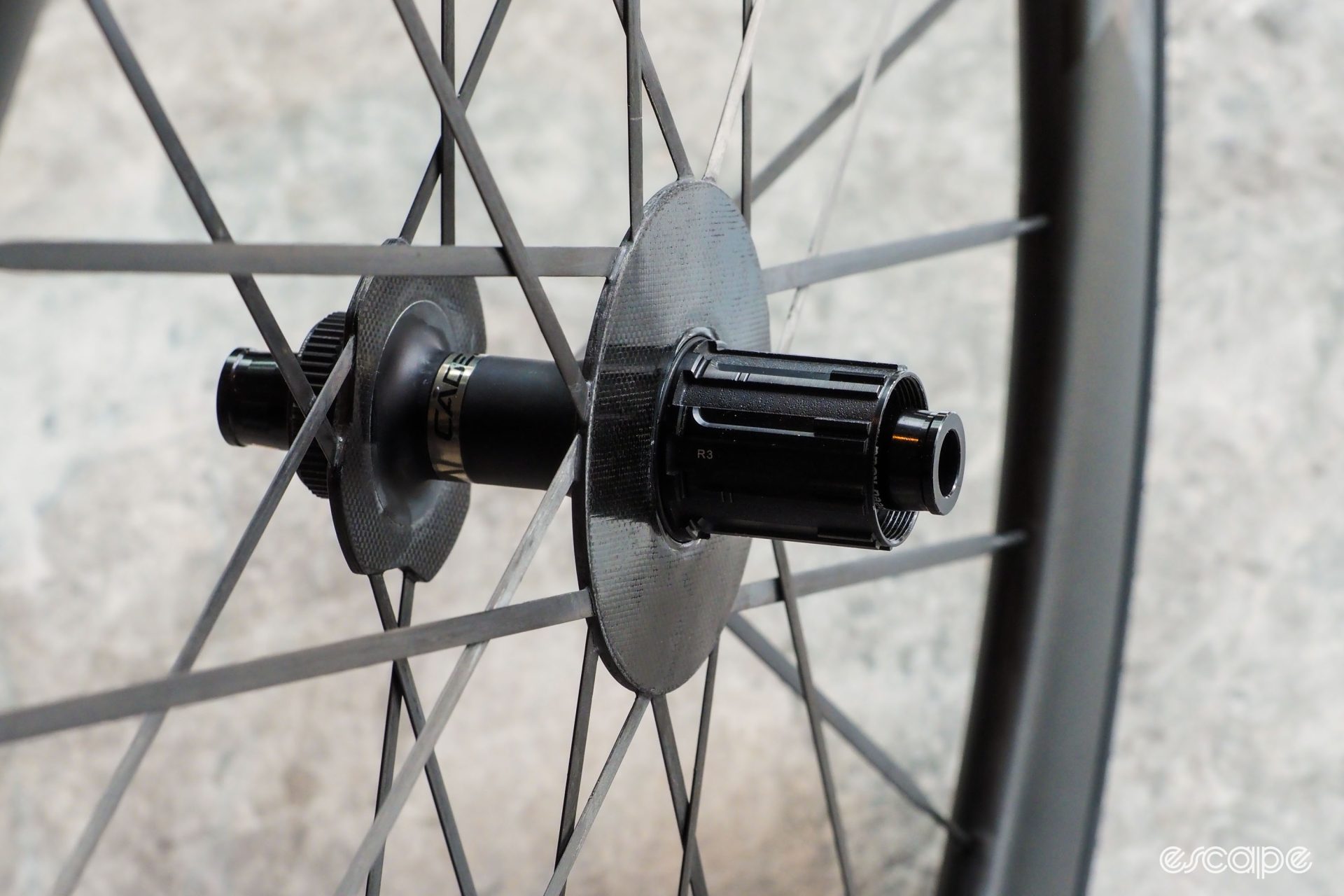
Wollny said earlier development mules were as much as 100 g lighter, but the goal here was stiffness, largely owing to how those spokes are molded together with the oversized carbon fiber hub flanges. Cadex claims the Max 40 is substantially stiffer laterally (by around 10-45%, depending on the measurement) than similar wheelsets from Lightweight or Syncros for better responsiveness. Having ridden those competing wheels myself, let’s say I’m more than a little intrigued.
The construction method at the hub may be similar to those other two brands, but whereas those wheels also feature fully molded construction where they meet the rims, the Cadex Max 40 uses more conventional threaded nipples hidden inside the rim so they can still be trued if/when necessary. Inside the rear hub is Cadex’s own star ratchet-style driver mechanism with 48 teeth for a snappy 7.5° engagement speed – and yes, it’s still pretty phenomenally loud. Hybrid ceramic bearings are used throughout.
Retail price per set is US$4,000 / AU$6,300 / £3,500 / €TBC.
Going along with those wheels are new Cadex Race GC tubeless clincher tires, built with a 240 TPI nylon casing “with fewer casing layers” that together reduce rolling resistance supposedly by 6.6 W despite including a Kevlar breaker belt to help keep punctures at bay. And although the existing rubber compound carries over, the tread cap sports a new Moto GP-like profile with (very) subtly squared-off shoulders for more cornering grip. At least for now, the Race GC is being produced only in a 700x28 mm size in a tubeless-and-hookless-compatible format with a claimed weight of 279 g. The actual measurement is 27.5 mm when mounted to those new Cadex Max 40 rims, which plays well with their 28 mm external width.
Retail pricing is to be confirmed.
Rounding out the new Cadex offerings are two integrated one-piece carbon fiber road cockpits, both with true one-piece molded construction (as in, they’re not molded in pieces and bonded-and-overwrapped, which is much more common).
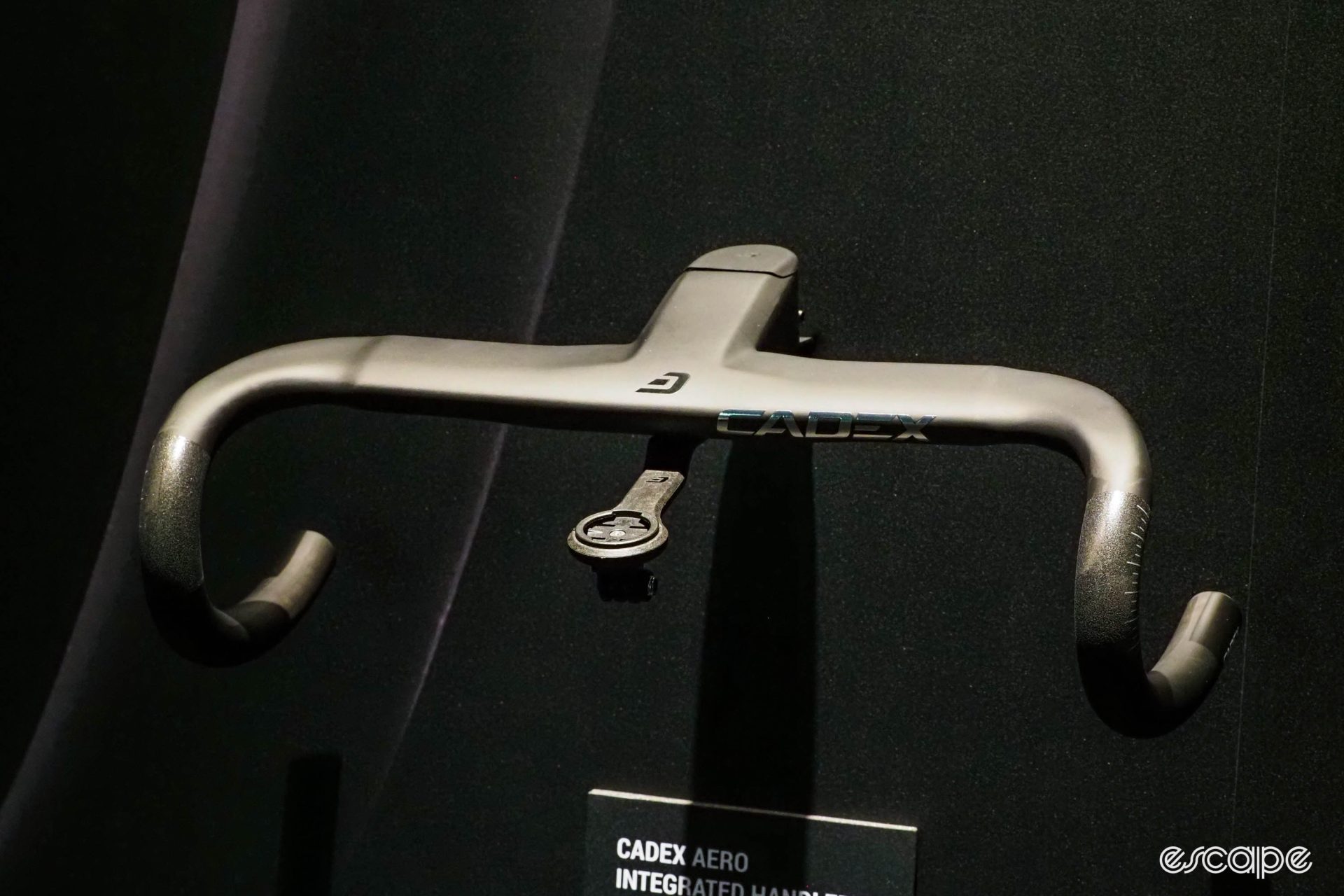
The Cadex Aero Integrated is the more aggressive of the two, with – duh – aero-profiled tops to help it slice through the wind. However, it’s also intended to put the rider in a more efficient position with a longer 80 mm reach and 125 mm drop. Those drops sport a 3° flare so riders can cruise in a faster and narrower position, but still have a little more leverage for sprints and descents.
Cadex is offering the Aero Integrated cockpit in 80-140 mm stem lengths and 340-420 mm widths (measured at the hoods), with a whopping 19 combinations offered in total. Naturally, it’s profiled to pair perfectly with the latest Giant Propel with the D-shaped “OverDrive Aero” steerer, but it’ll also work with conventional 1 1/8” or 1 1/4” round steerers and can be used with either internal or external routing. Claimed weight is 325 g for a 100 x 420 mm size, and retail price is US$700 / AU$1,000 / £650 / €TBC.
Alternatively, there’s the Cadex Race Integrated setup, which focuses more on low weight and high stiffness with its more rounded cross-sections. Drop is the same at 125 mm, but with a larger 11° flare. The reach is also a bit shorter at 72 mm and the stem more slimmed-down. Hoses can be run internally or externally, but Cadex is only including profiled spacers to match certain Giant road models.

Stem lengths for the Race Integrated span from 80-140 mm and bar widths from 360-420 mm (at the hoods), for a grand total of 16 combos in total. Even more remarkably, Cadex is actually making double that number since there are specific versions for both conventional 1 1/8” round steerers and for Giant’s own OverDrive Aero D-shaped 1 1/4” steerer (“If the team asks for it, we have to make it,” said Cadex global head of product and marketing Jeff Schneider). Claimed weight is just 256 g for a 100x420 mm size, and retail price is US$650 / AU$950 / £625 / €TBC.
Cadex hasn’t left smaller riders out in the cold with either of the new integrated setups. The 360 mm width of the Aero Integrated cockpit sports a shorter 72 mm reach and shallower 125 mm drop, while the Race Integrated goes with a 68 mm reach and 120 mm drop on the 360 mm and 380 mm widths. Those smaller sizes of the Race Integrated also get 8° flares instead of the 11° dimension on larger sizes.
Interestingly, neither of the new Cadex cockpits are included stock on any of Giant’s new TCR complete bikes, including flagship models. While one-piece setups have become far more commonplace at that pointy end of the price range – partially for weight savings, but mostly for looks – Giant has taken the position that the slight weight and aesthetic penalty of two-piece setups is more than worth the convenience at the dealer and consumer level.
Bravo.
The ride
Before I start spouting off on my initial impressions of the new TCR, I must first offer up some caveats – namely that I was on new-to-me roads with glass-smooth Taiwanese tarmac, on different wheels and tires, and sporting late-winter fitness.
That said, the combination of this new TCR, those fancy Cadex wheels, and the new Cadex tires? Hoo boy, was this thing fun to blast around on for a couple of days.
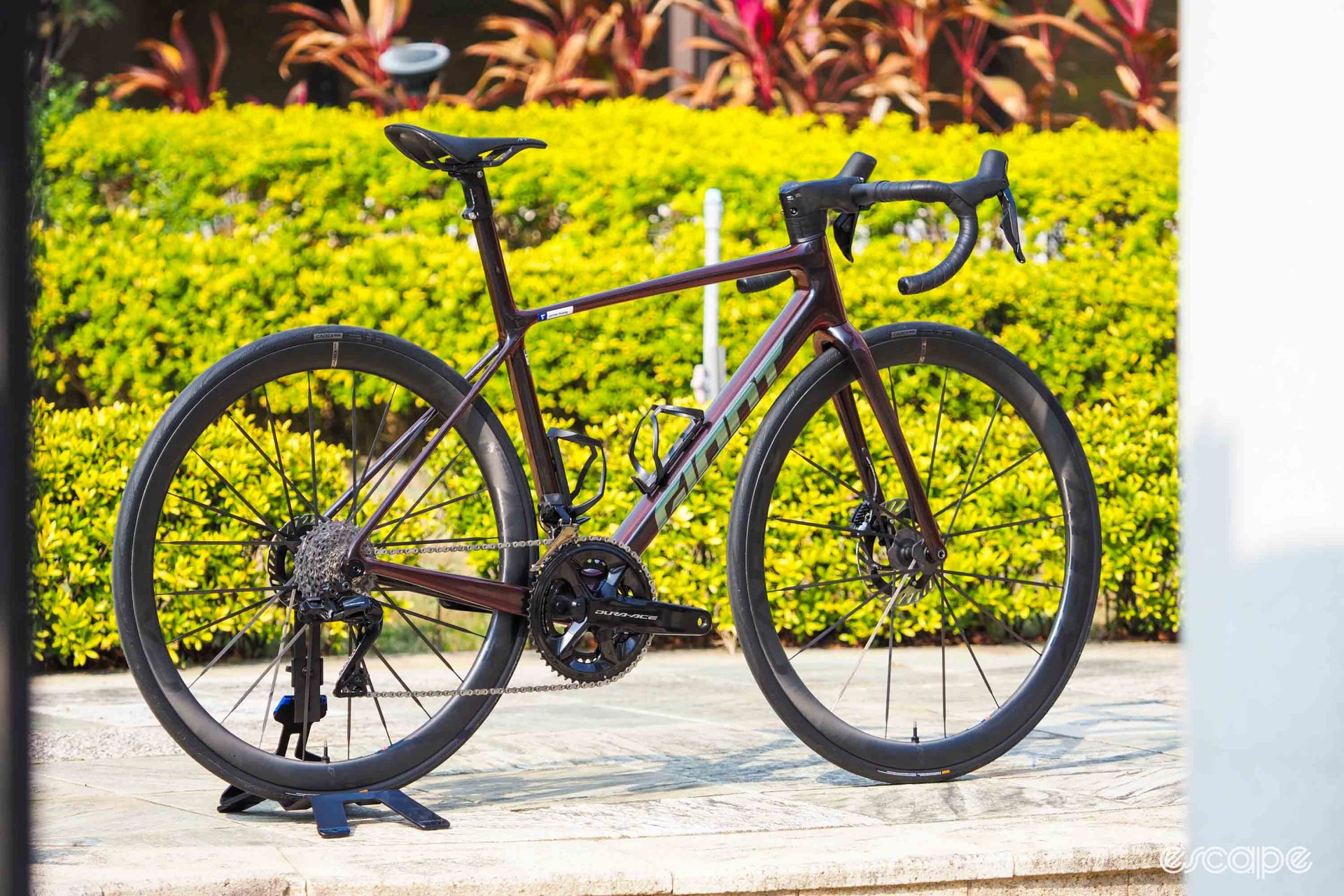
The TCR has never exactly been a slouch under power, and this new one continues to be a veritable springboard when you twist the proverbial throttle. It’s wonderfully responsive when sprinting, but particularly in combination with the very low weight, it’s positively fantastic on steep climbs. And how light, exactly? My small-sized loaner was 6.39 kg (14.09 lb) without pedals, but with a pair of bottle cages and a computer mount, so basically bang-on with the claimed figures.
One of the routes we did during the launch event included a sinuous climb with an average 9% grade and countless switchbacks as the road snaked its way up the mountain – similar in personality to any one of the classic European climbs many of us know so well. On the way up, it was easy to settle into a rhythm on the slightly flatter pitches before punching it through the hairpin and getting back in the saddle, all the while with the distinct sensation of efficient power transfer to the tire patch. Rinse, repeat, smile. I would have preferred just a bit more width than the stock 36 cm bar on my bike for pedaling out of the saddle, but as a self-professed non-climber, this is exactly the sort of machine that makes me hate going uphill just that little bit less.
Things start getting extra spicy on the way down. The tangible stiffness of that Cadex Max 40 front wheel almost pushes the TCR’s already-quick steering into darty territory, to the point where I almost wished it was paired with a slightly detuned front end (I suspect the Max 40 on a current-gen Defy would be a hot ticket for many). It’s laughably easy to pick just about whatever line you want assuming there’s available traction, and feedback is excellent for where that traction is – as well as where it isn’t.
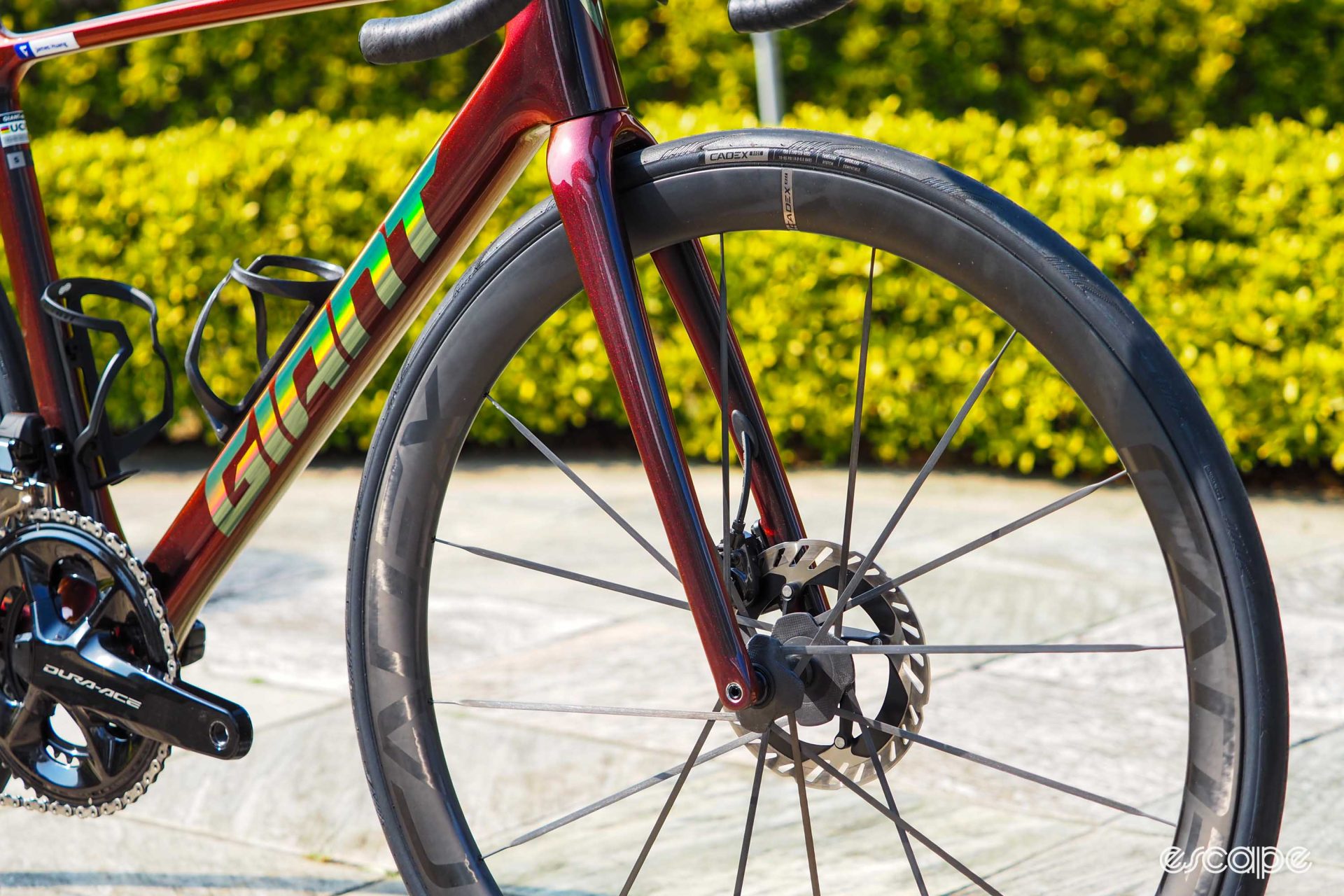
Mother Nature seemed to know I was out testing, serving up a generous portion of swirling winds. The TCR frame on its own has never been one to be overly affected by crosswinds, and that thankfully doesn’t change with this version. The 40 mm-deep wheels aren’t totally immune to side gusts, of course, but even when blasting downhill and getting hit with a sudden burst coming around a bend, it’s still plenty manageable without any unnecessary drama.
As for the ride quality … well, that’s impossible for me to say since, as I mentioned earlier, these were unfamiliar – and generally very smooth – roads with tires and wheels I hadn’t ridden before. That said, I could still tell there’s a decent amount of compliance up front from those slender fork blades, while all that exposed and newly slimmed-down integrated seatmast seems to do a solid job of taking the edge off of surprise potholes and expansion joints. Critics of the first-generation Cadex race clinchers – myself included – will also be happy to hear that these new ones have a notably elastic feel that tempers the stiffness of those Cadex carbon-spoked wheels, so much so that more than a few editors on site compared them to the latest Continental GP5000 S TR. Elite company, at last.
Interest piqued
A quick two days of riding still leaves lots of unanswered questions, though, and I’m hoping I’ll get to answer them if/when a longer-term sample is offered up. I’d love to see how the new TCR tackles a bit of mixed terrain, for example, and it’d be good to see how much of the experience I had on the roads around Taichung was due to the new frameset and how much was the wheels and/or tires. I unfortunately don’t have a 9th-gen TCR Advanced SL to compare against, but I’m so curious what that bike would feel like with the new wheels (and of course, what the new TCR feels like with a more conventional wheelset).
Part of me also wants to rekindle my old weight-weenie persona and build up a new TCR as a project bike. My small-sized TCR Advanced SL 0 Di2 was already feathery-light in stock form, but how much lighter could it be without altering its personality? Yeah, I want to know, too.
Nevertheless, initial impressions are pretty darn favorable, although I would have been surprised otherwise given my experience with other recent editions of the TCR. Seems like more of the same here, and that works for me.
More information can be found at www.giant-bicycles.com and www.cadex-cycling.com.
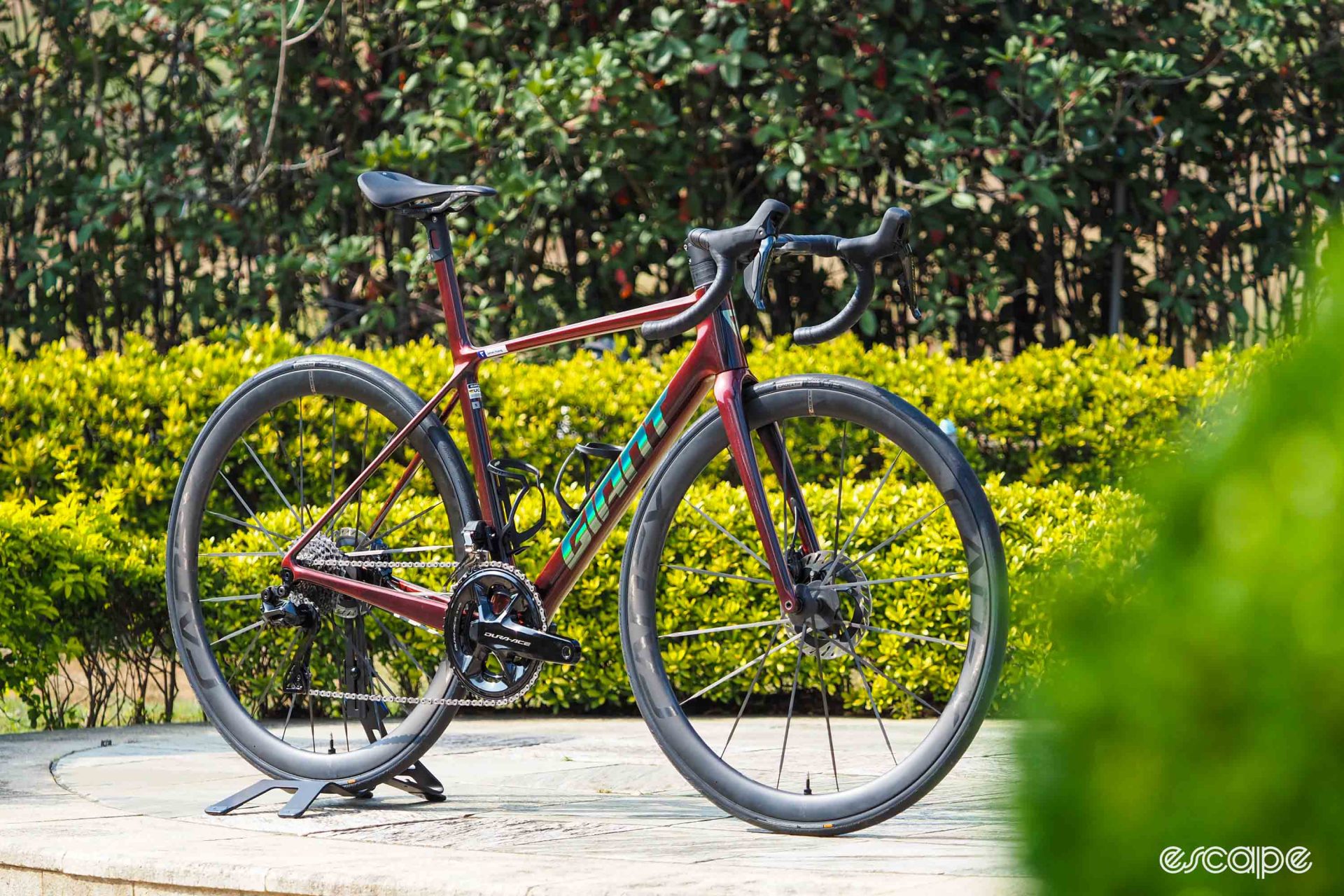
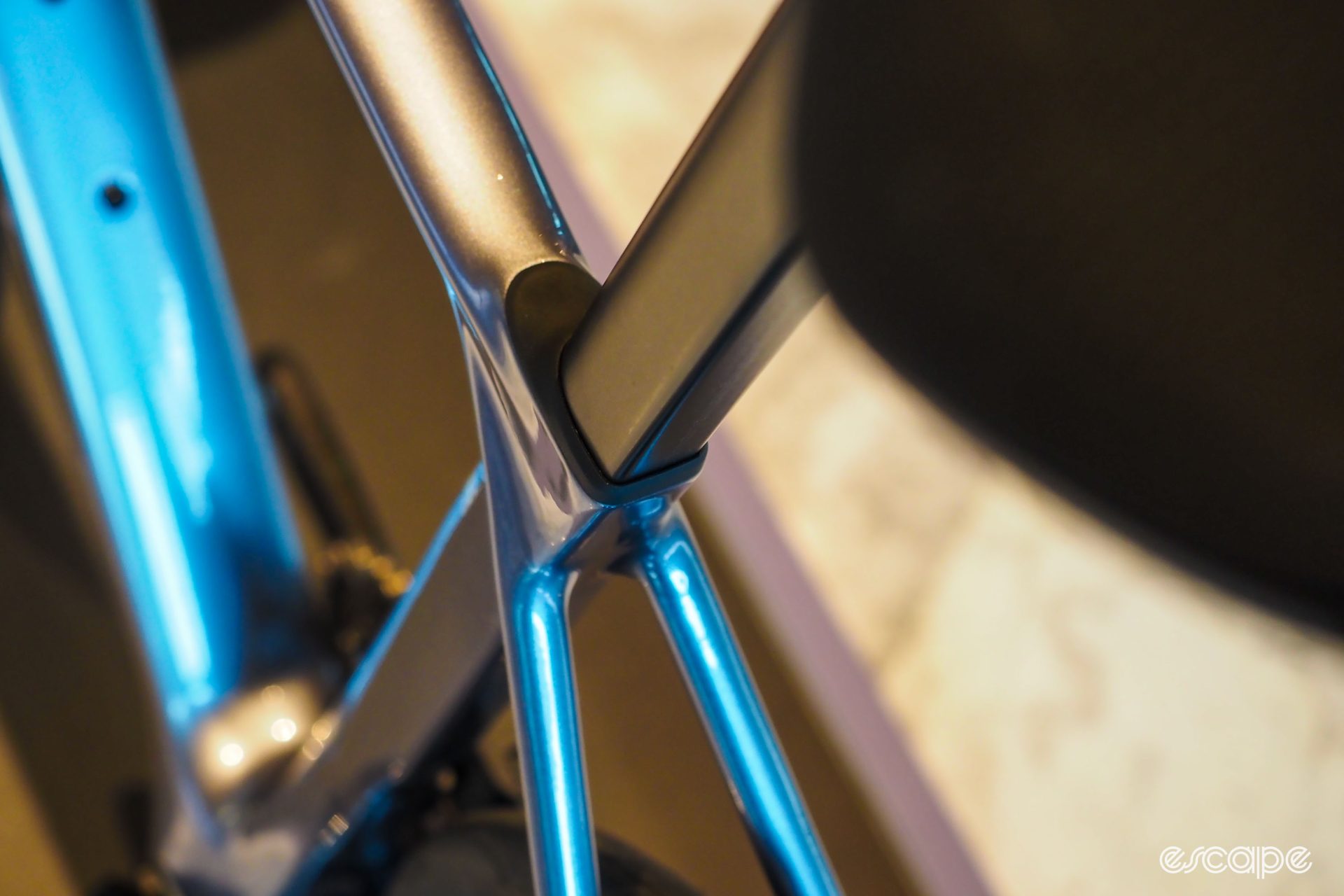
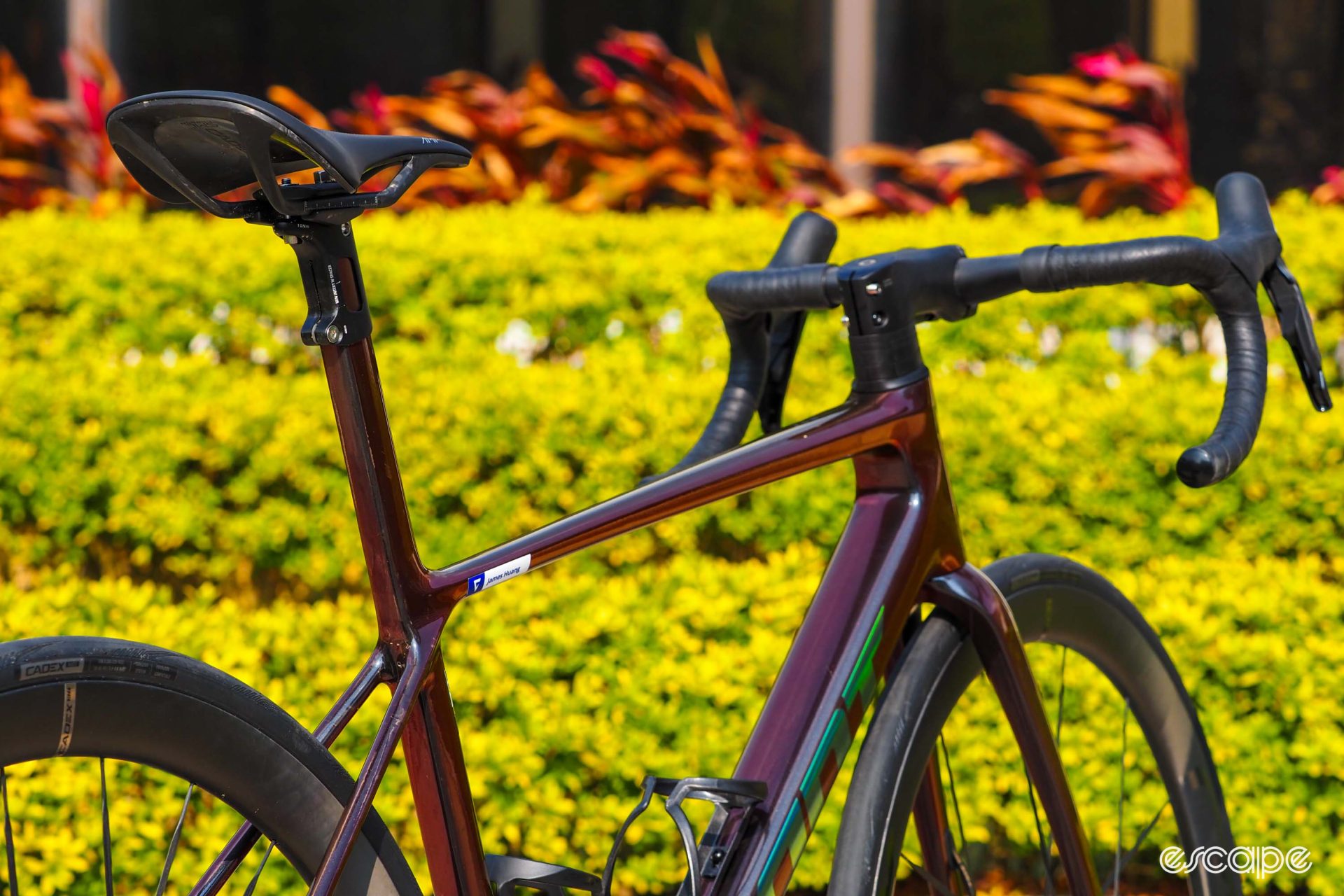
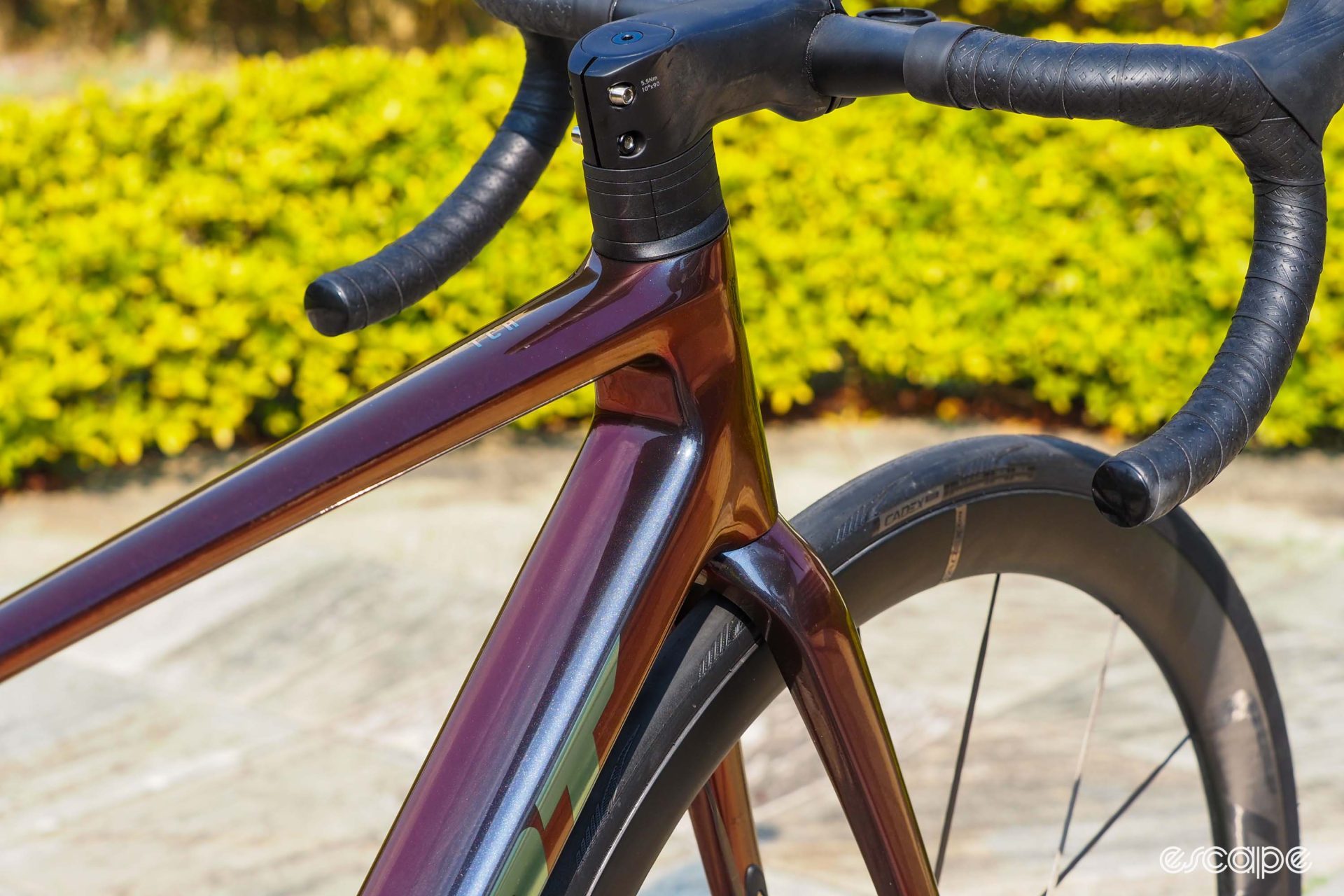
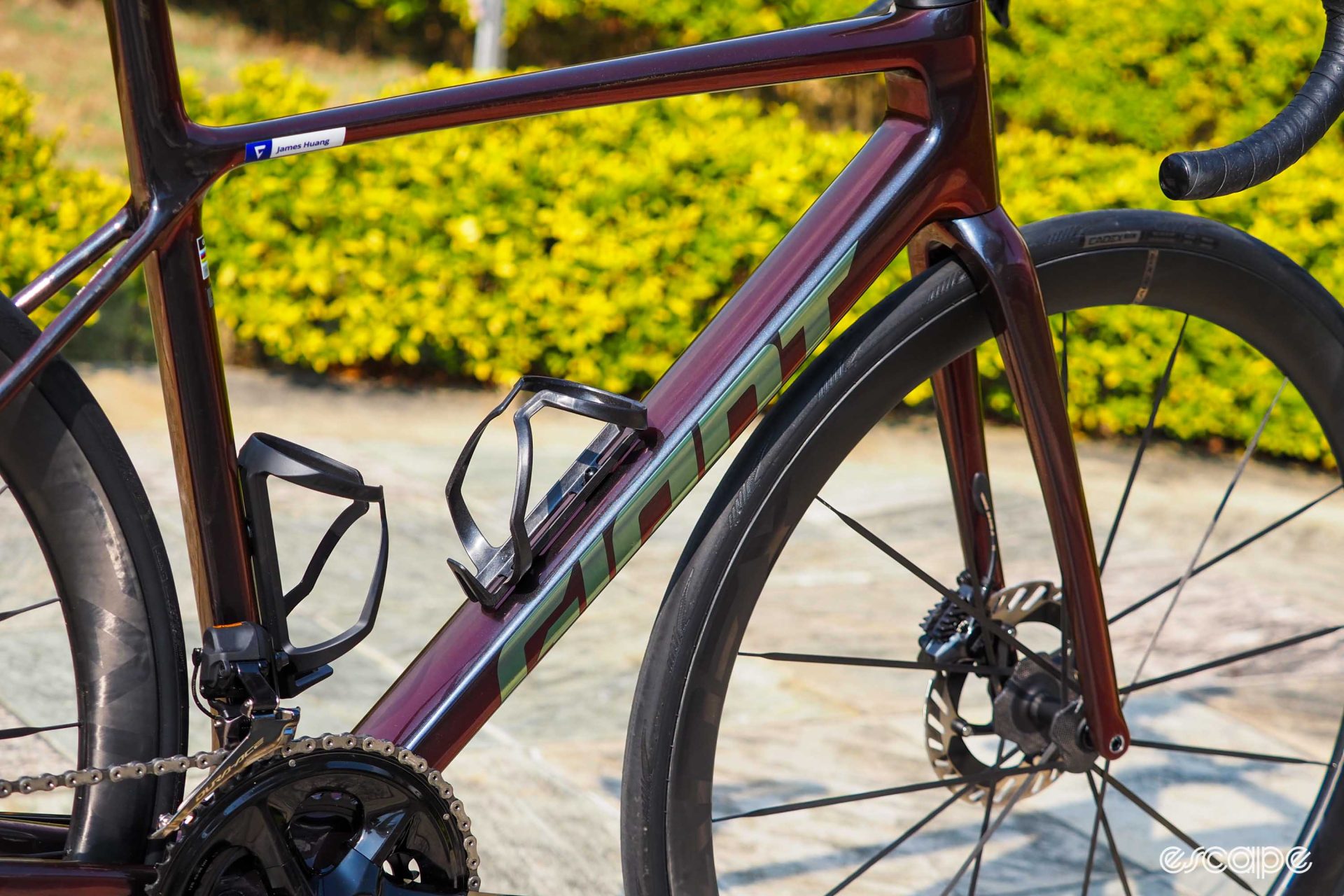

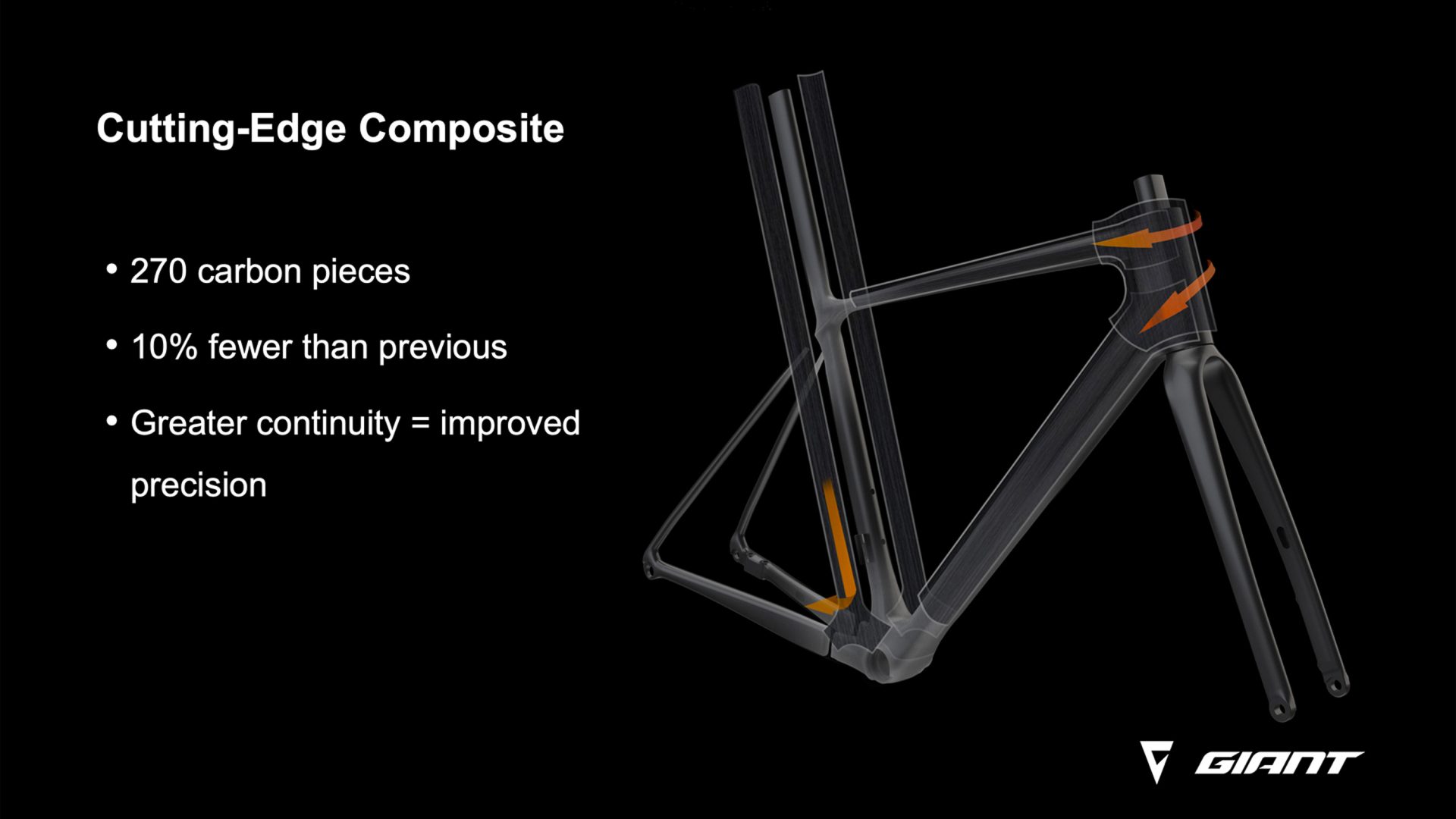
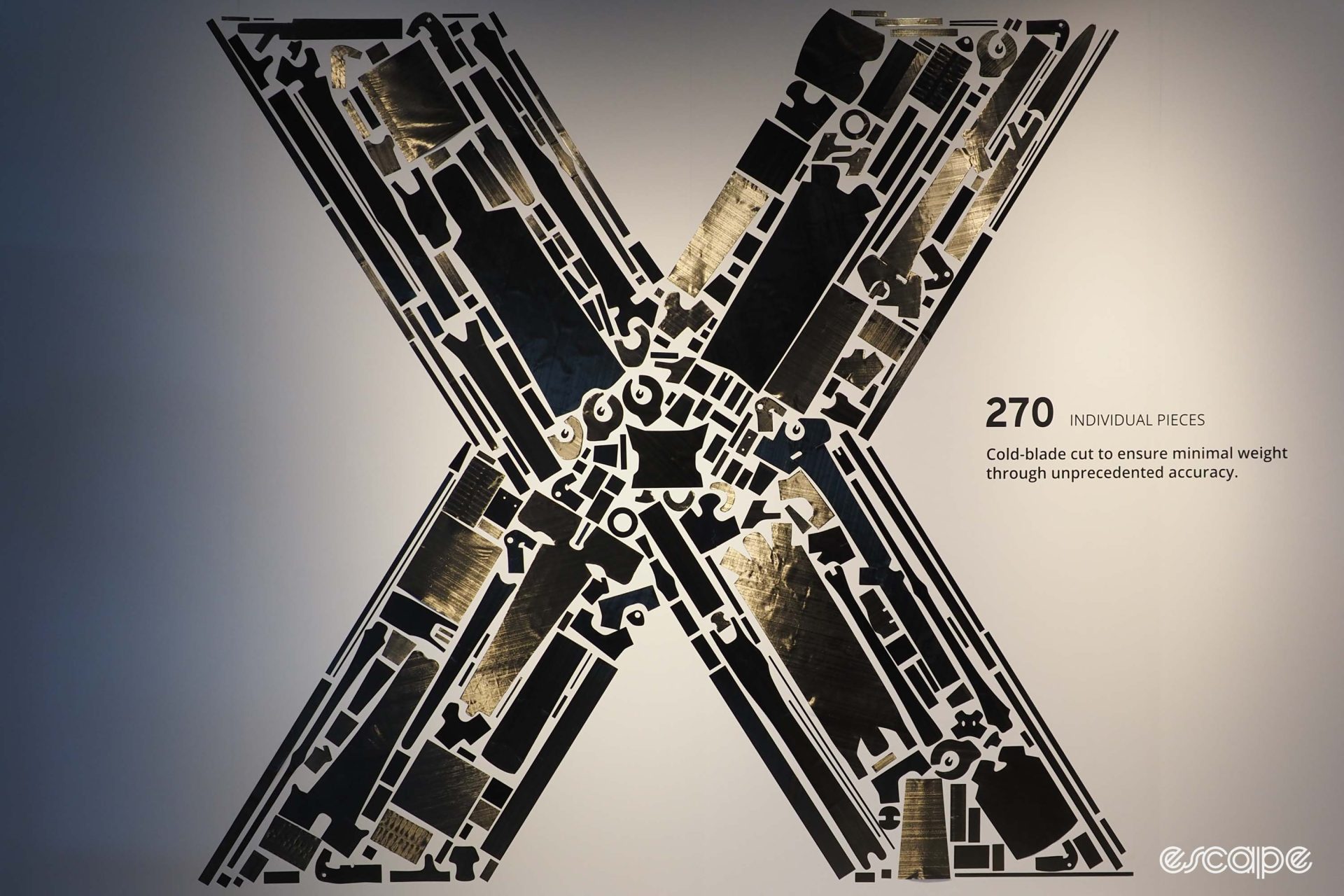
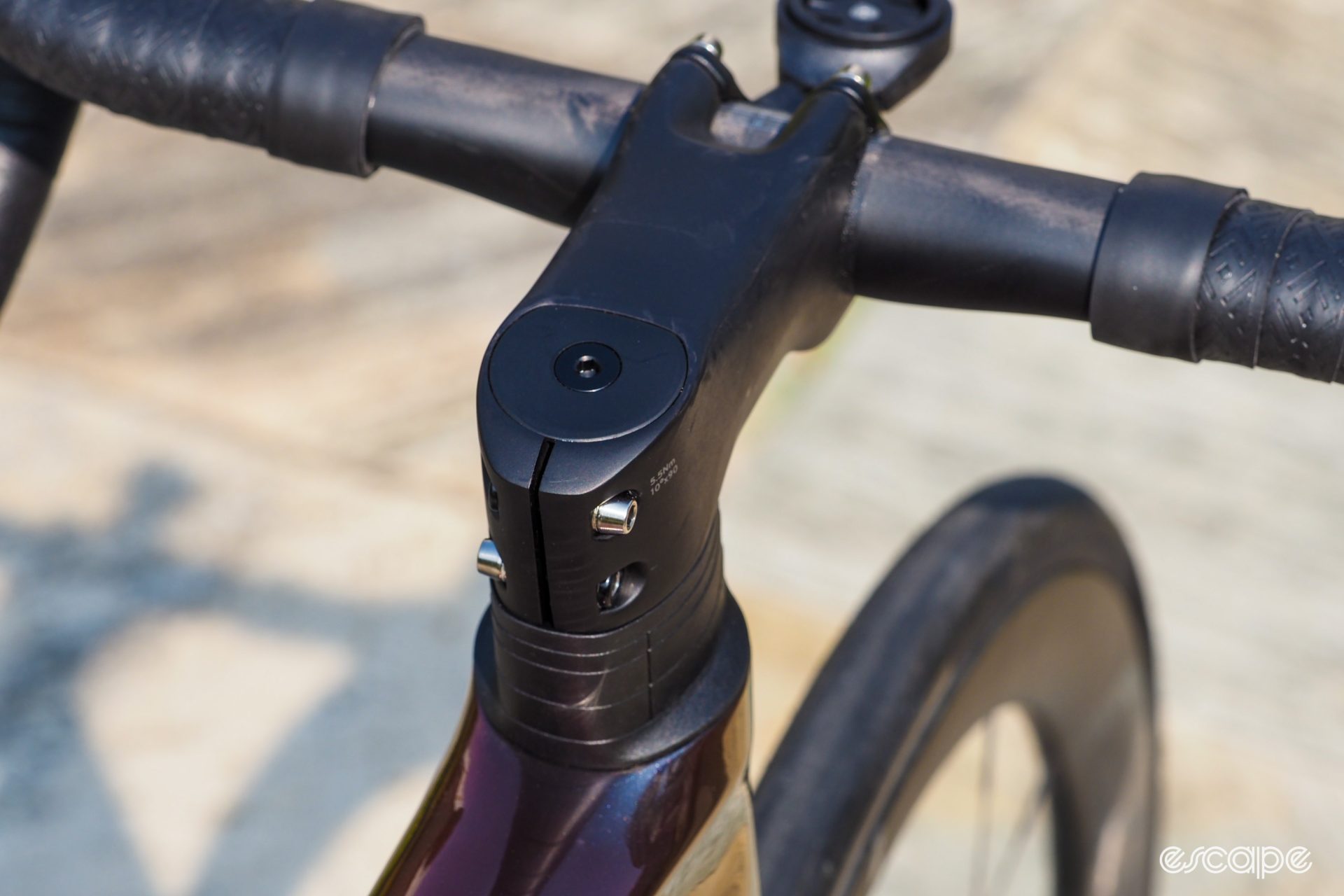
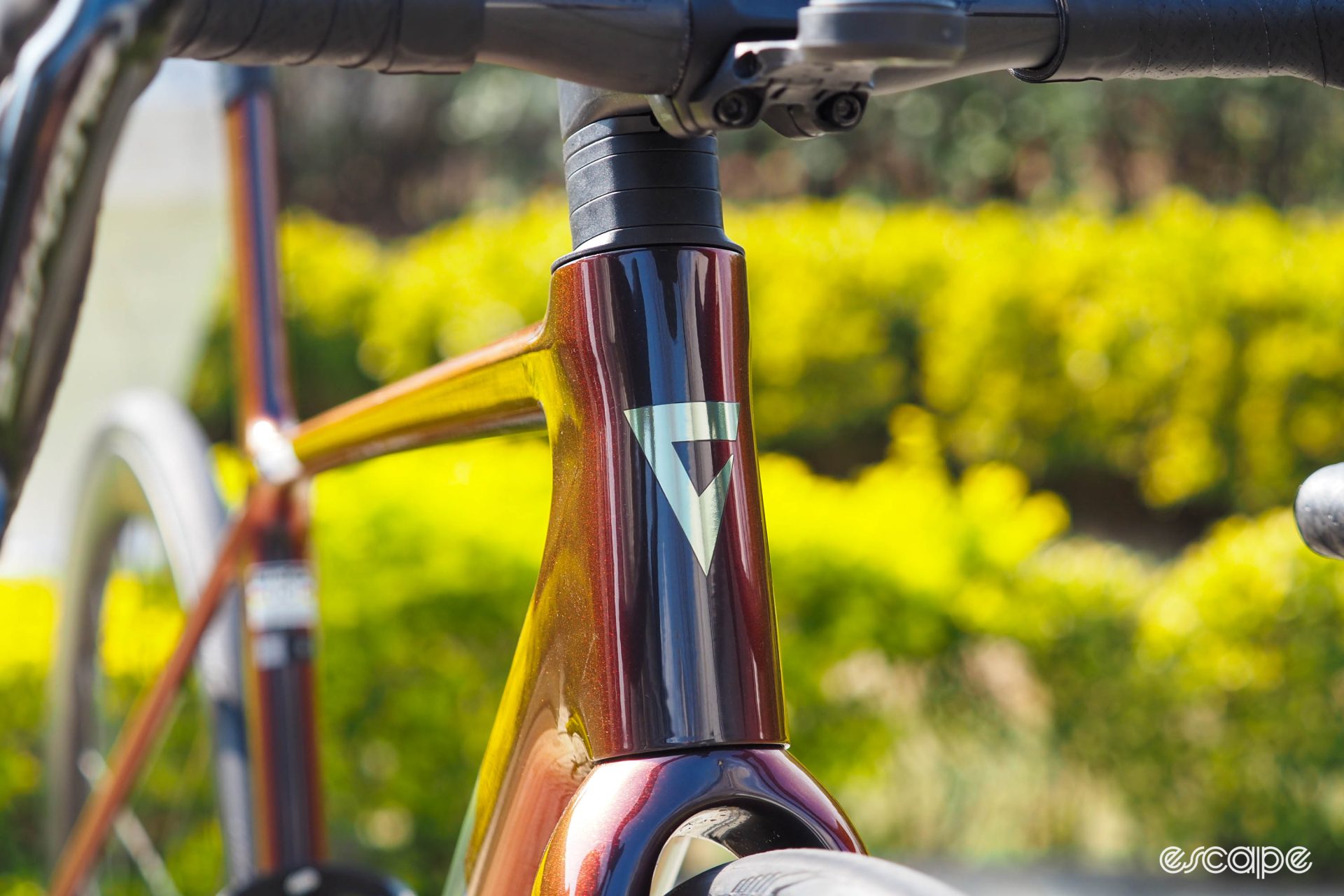
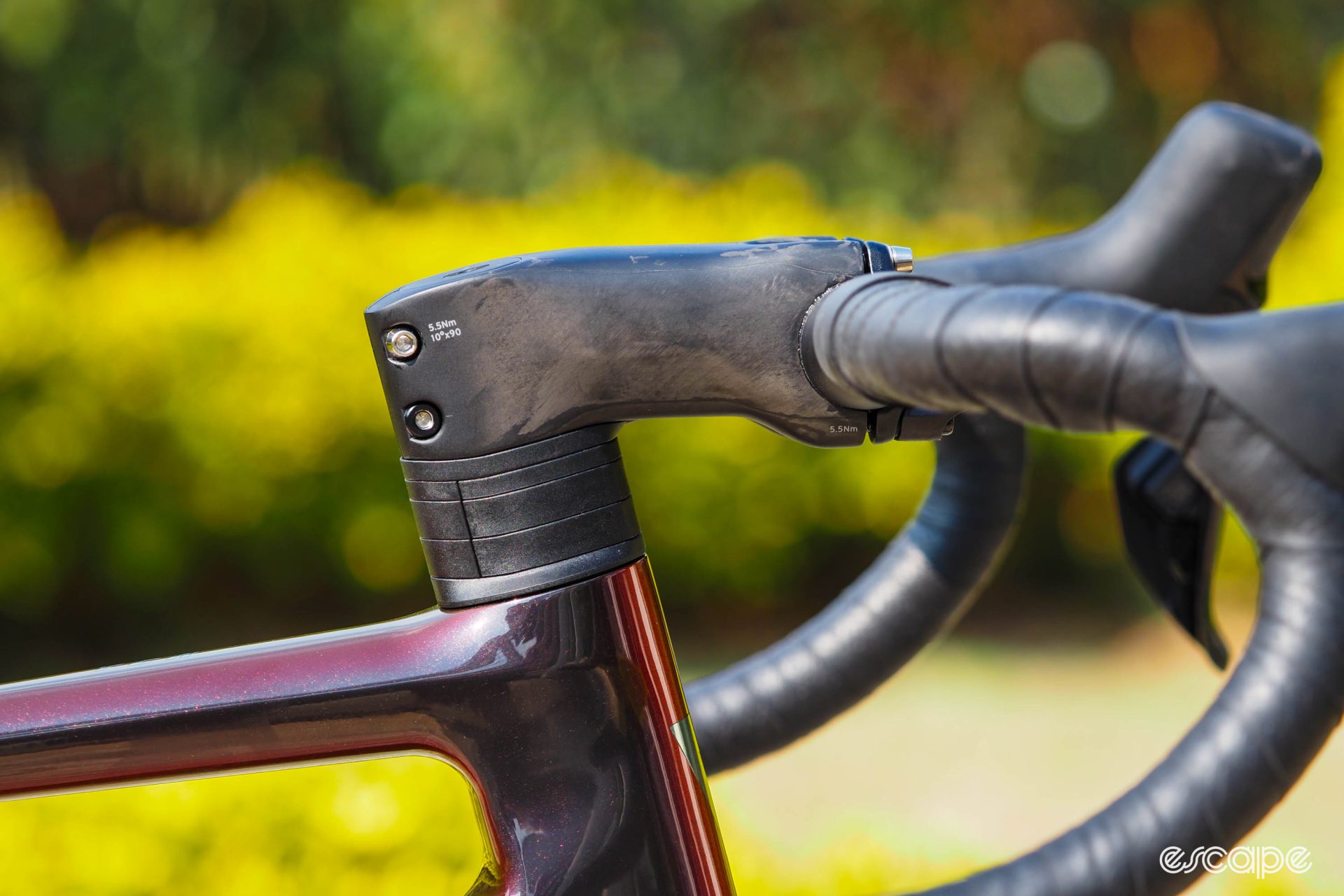
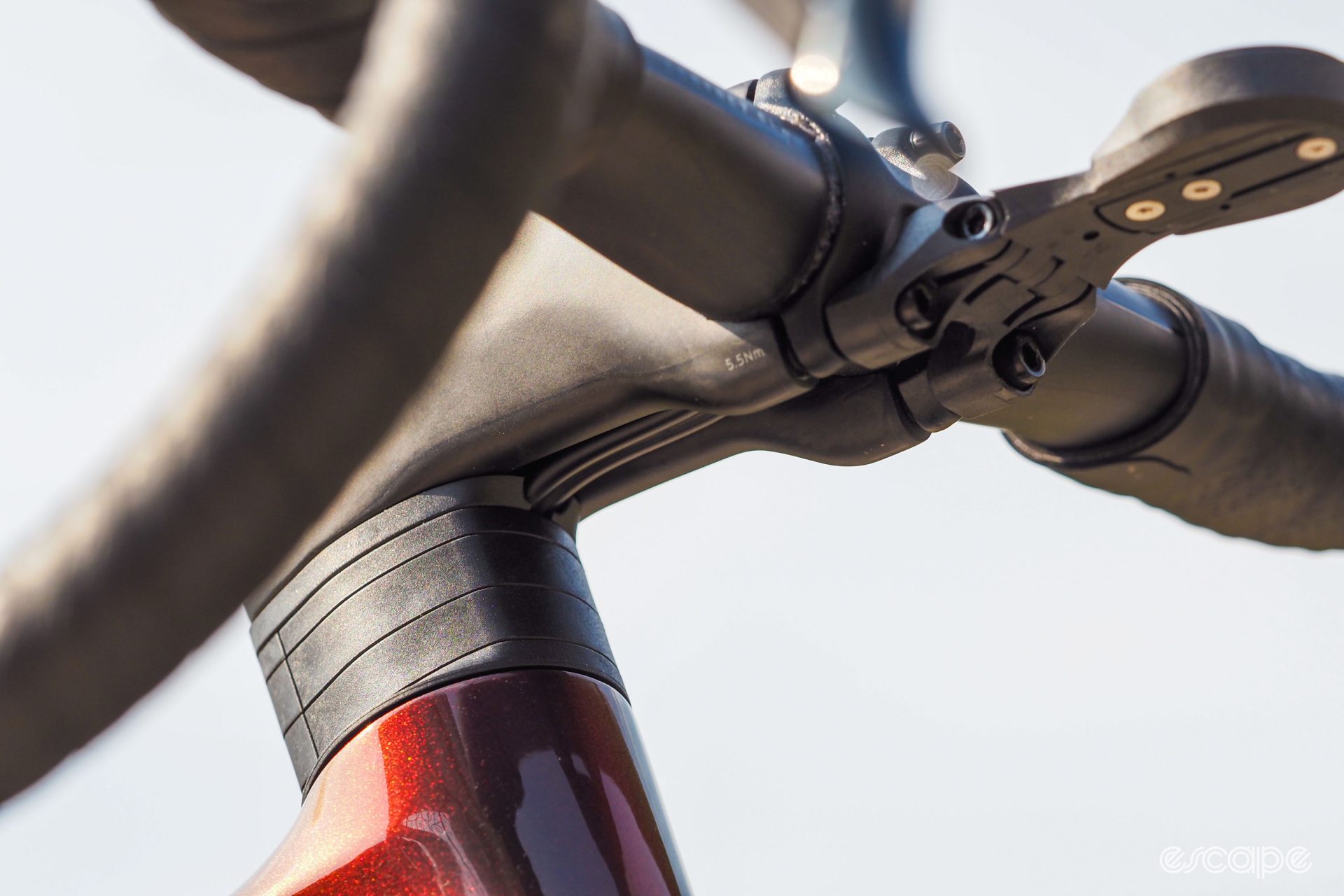
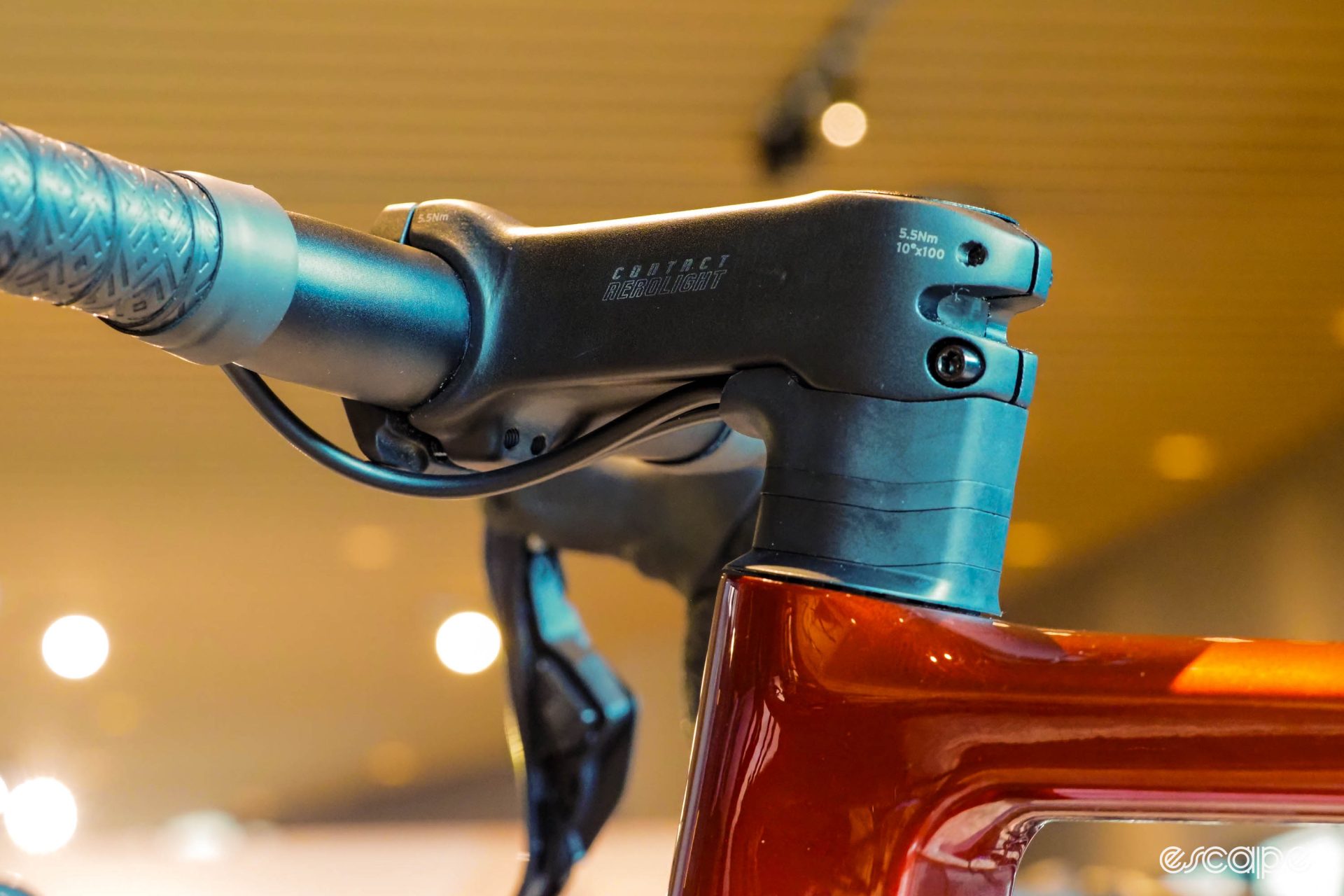
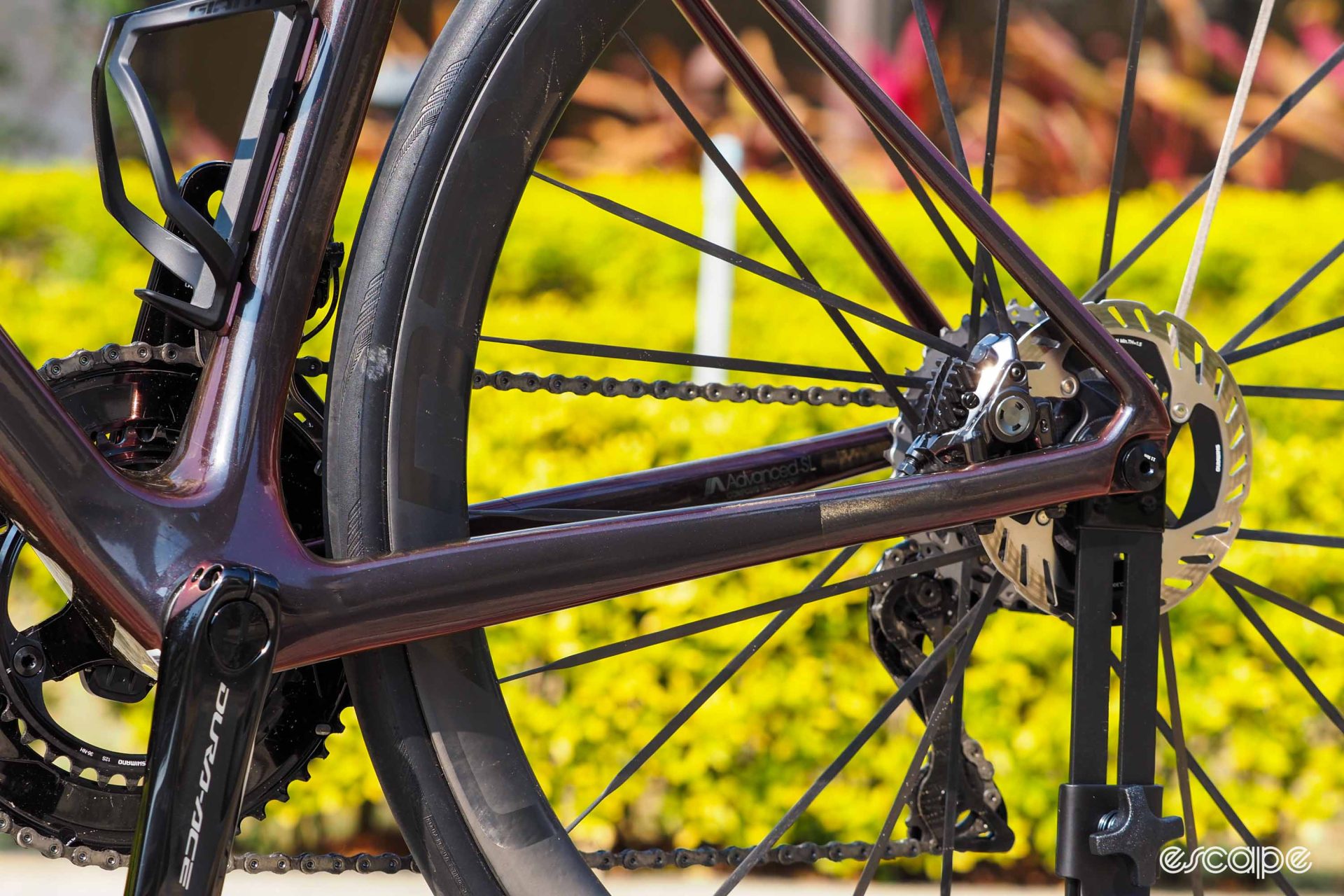


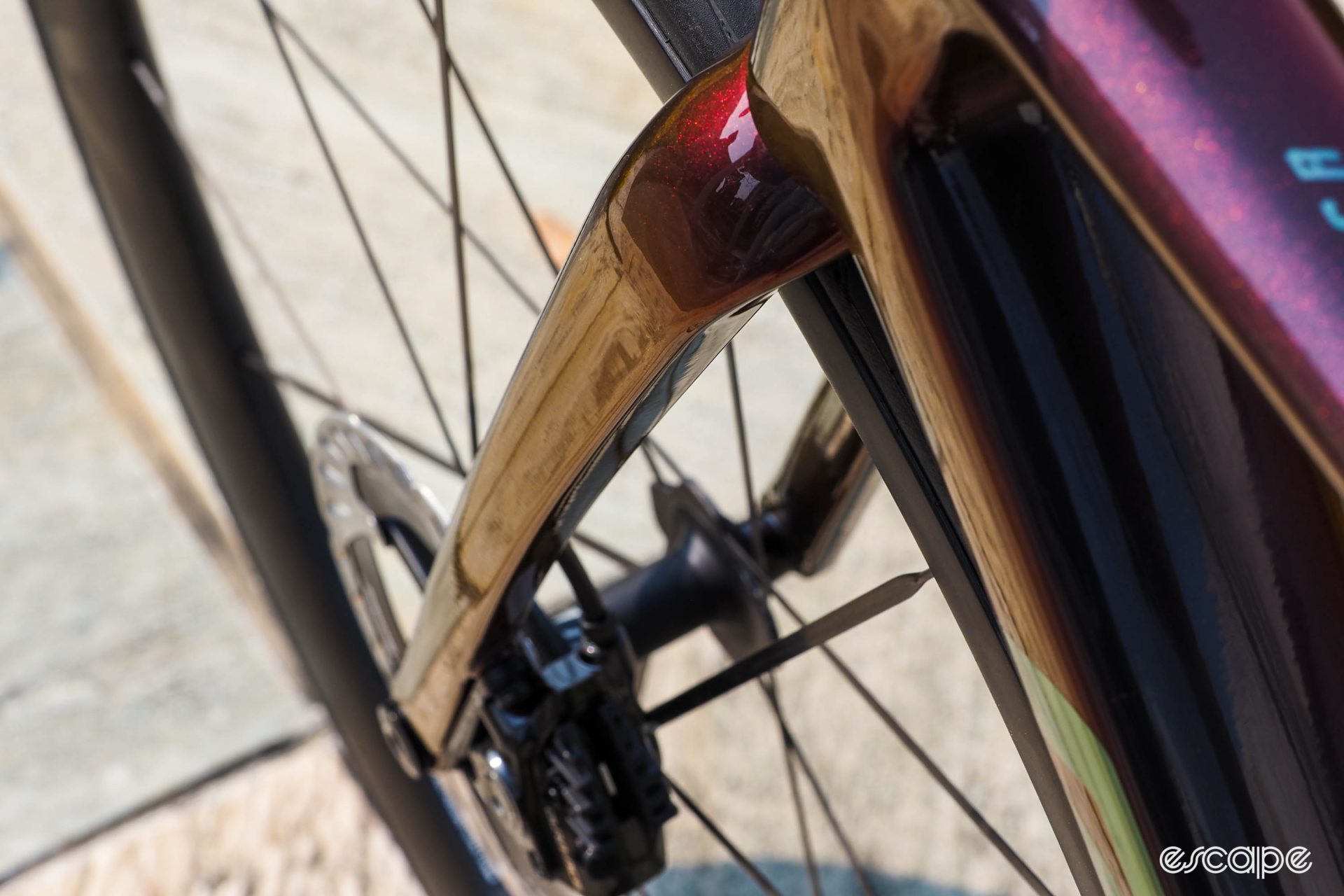
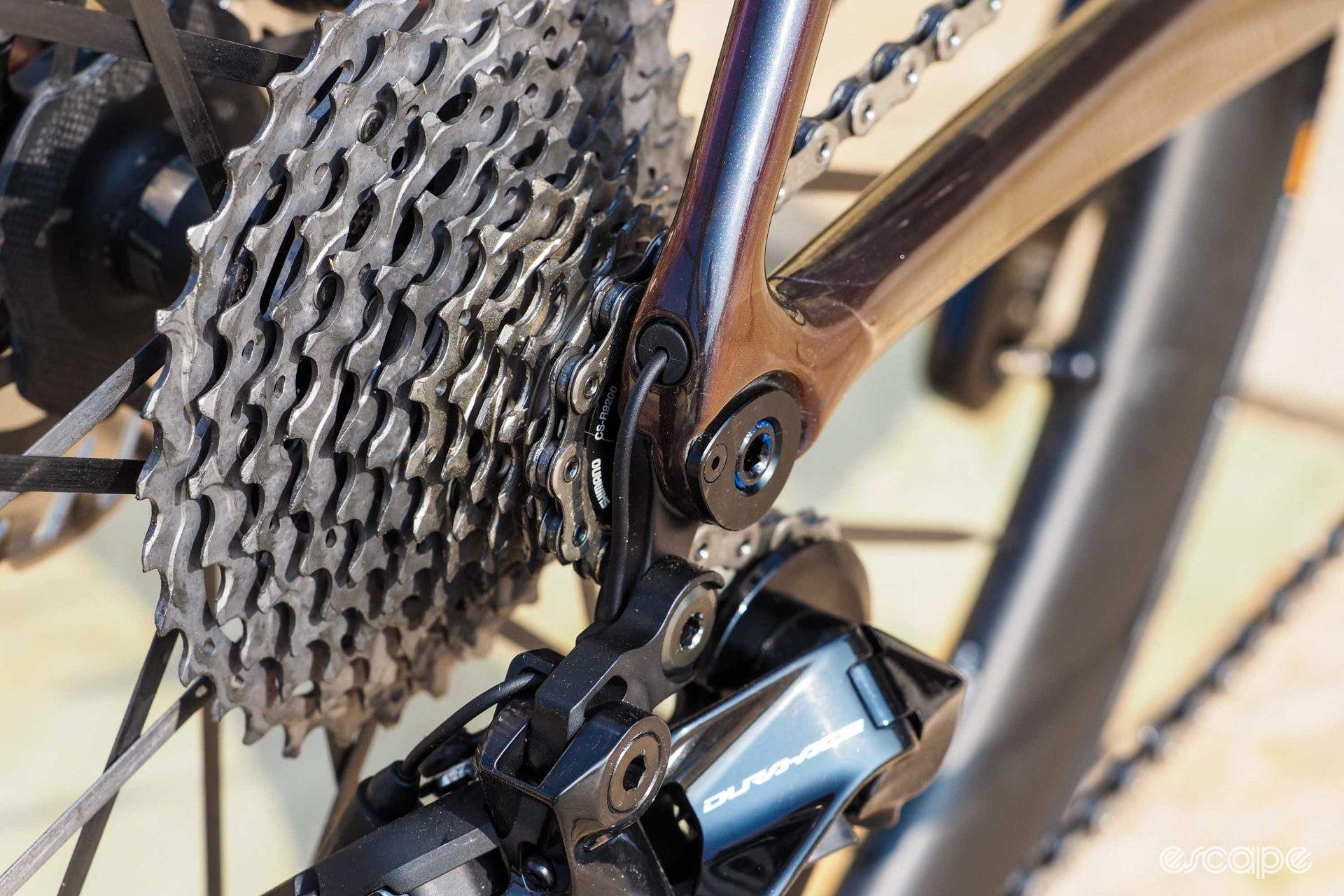
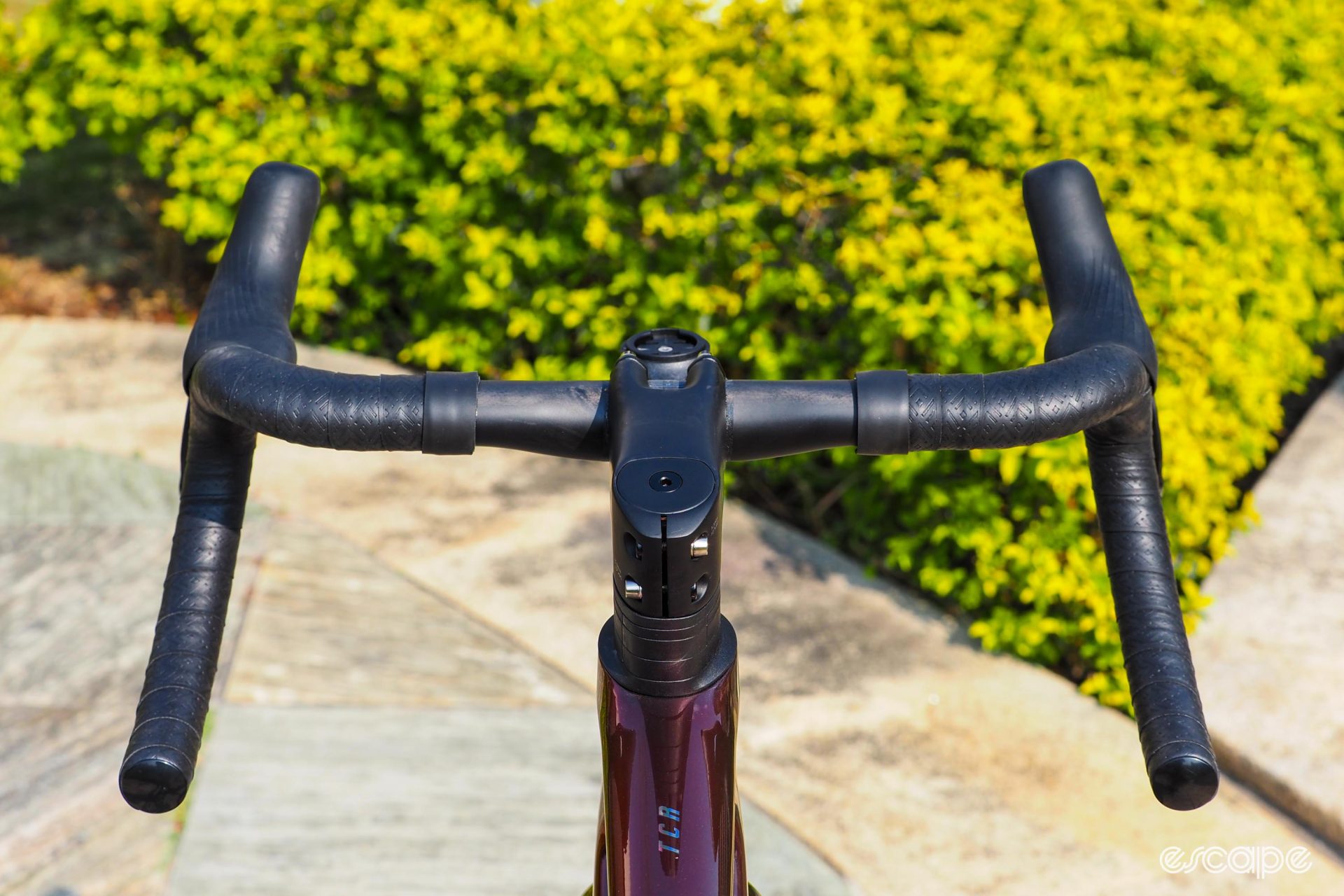

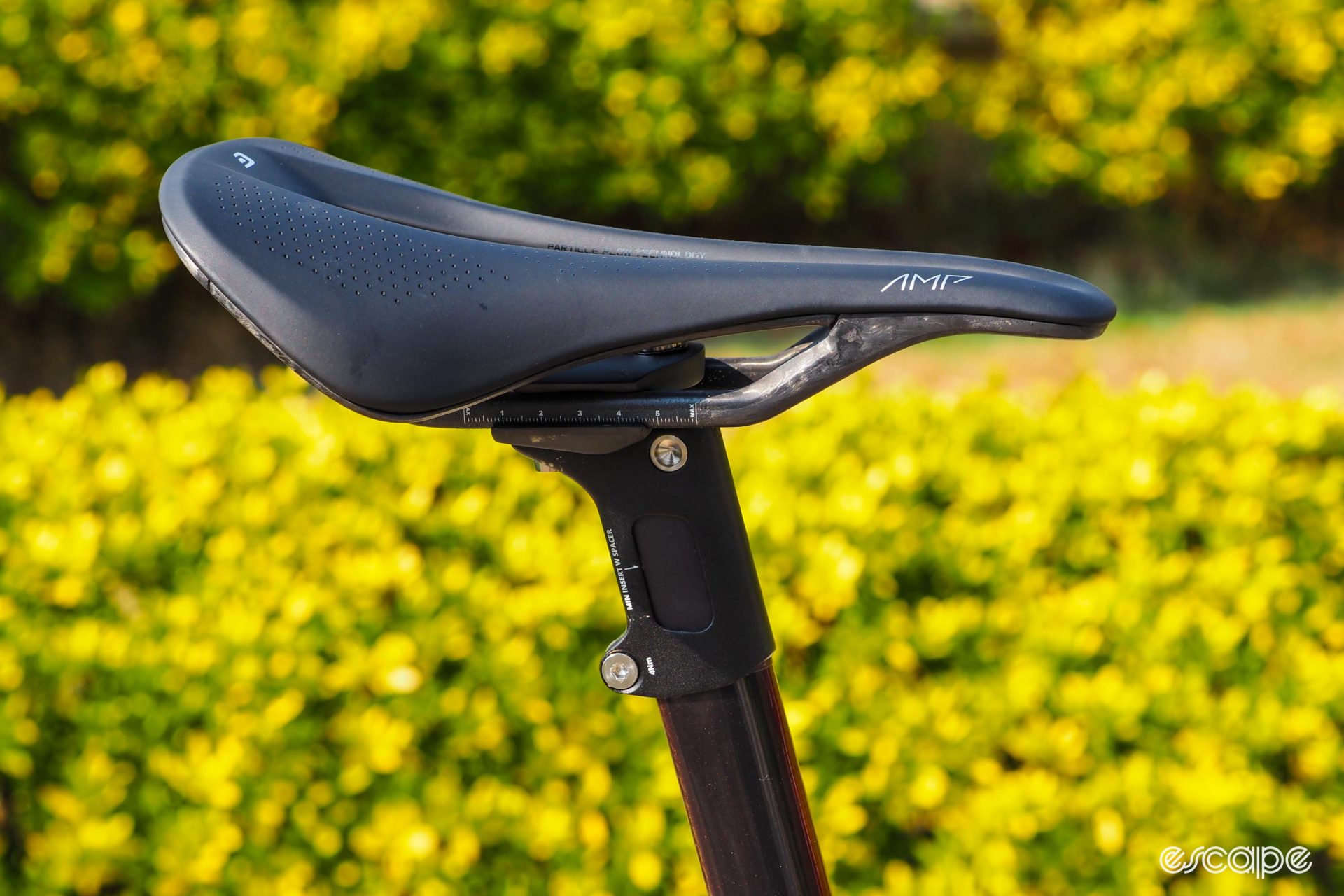

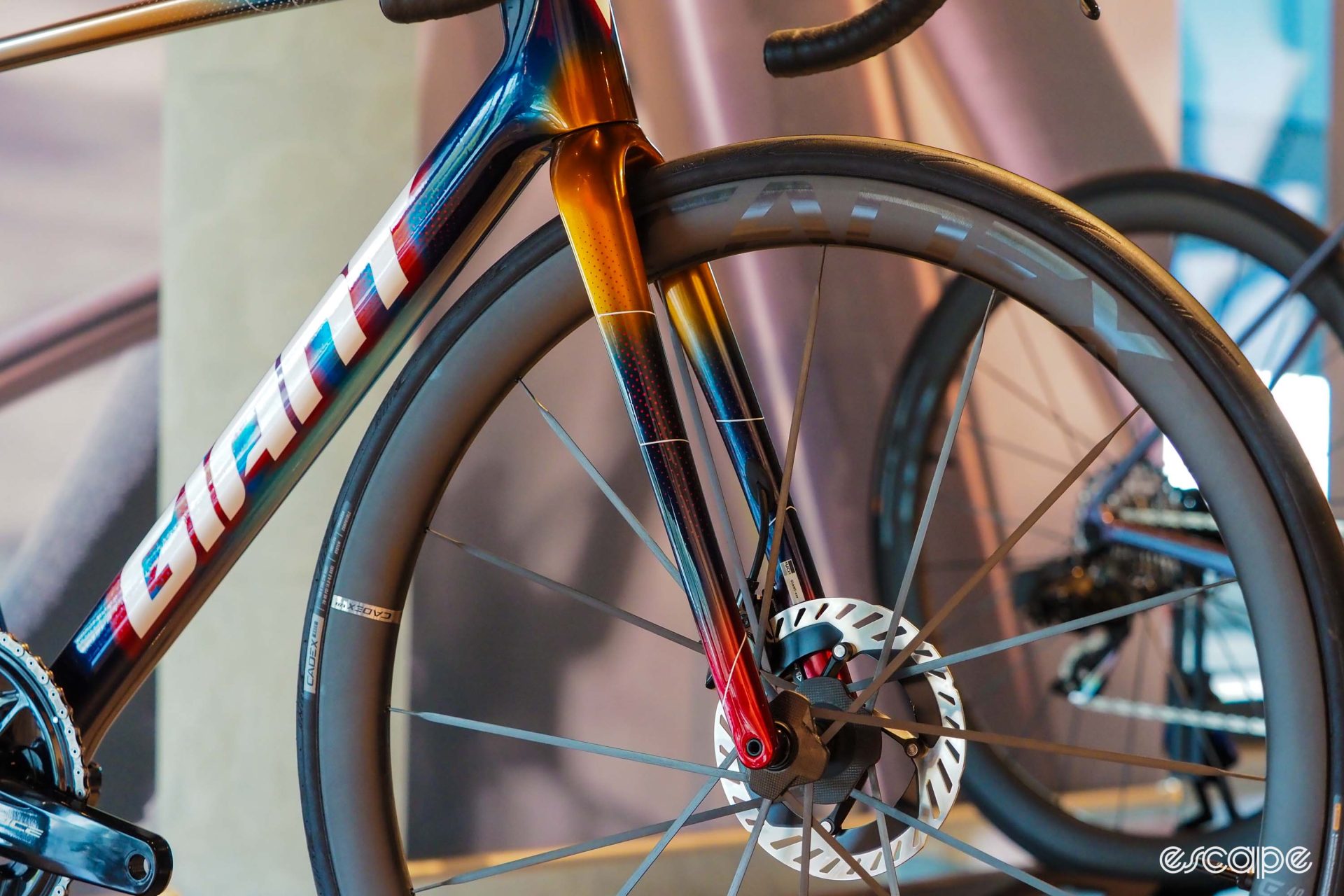
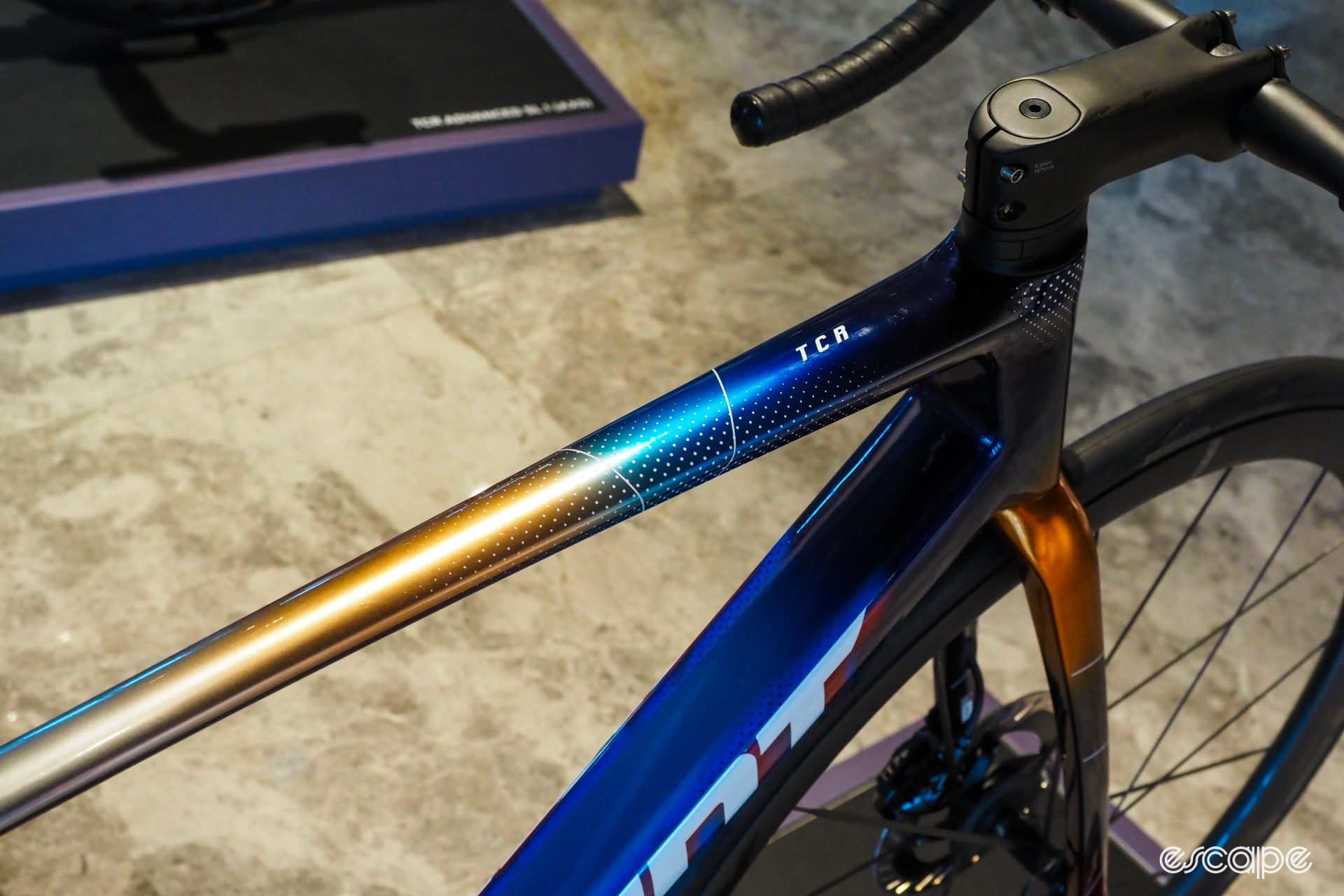
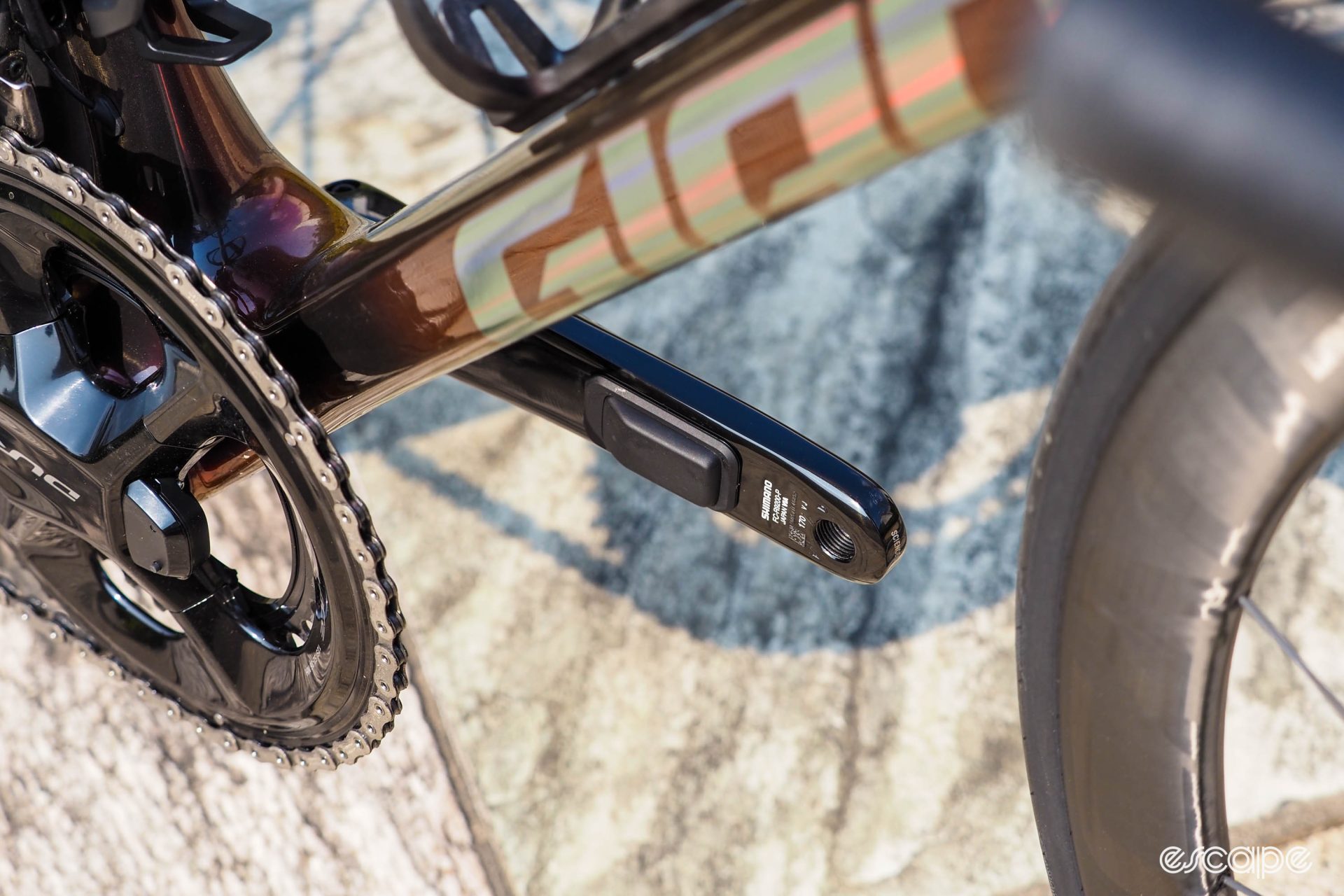
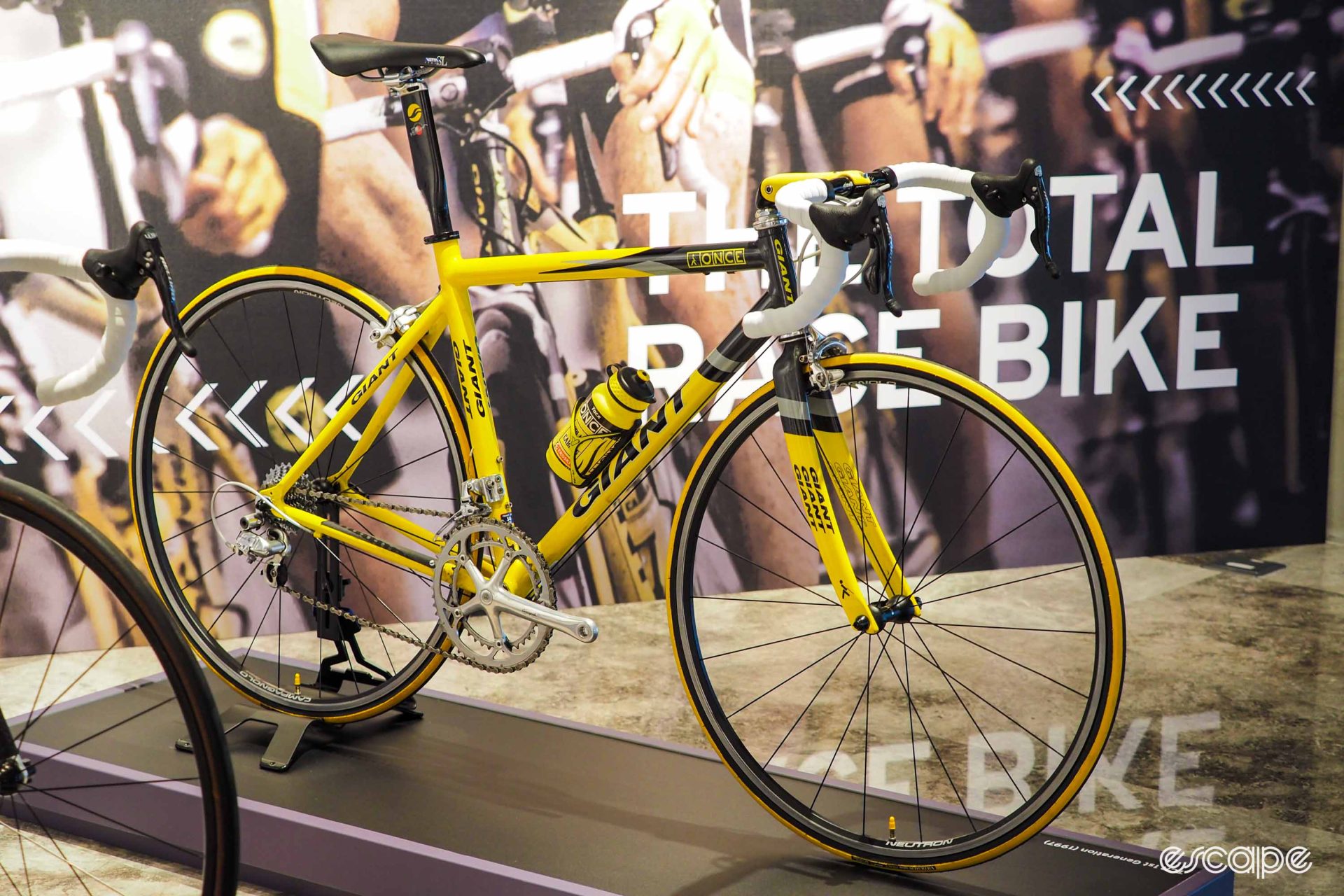
Did we do a good job with this story?



